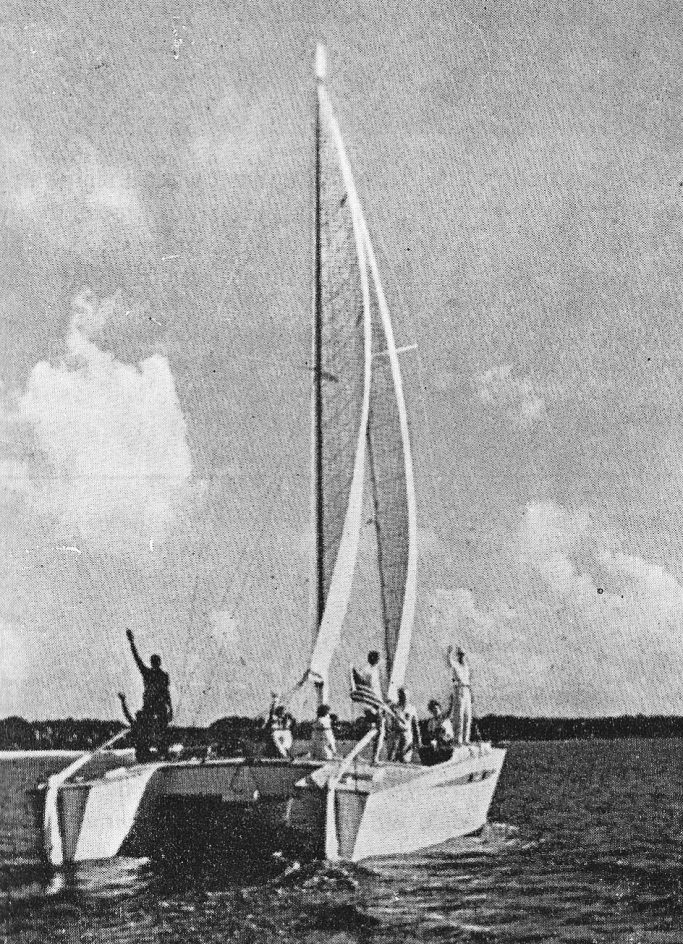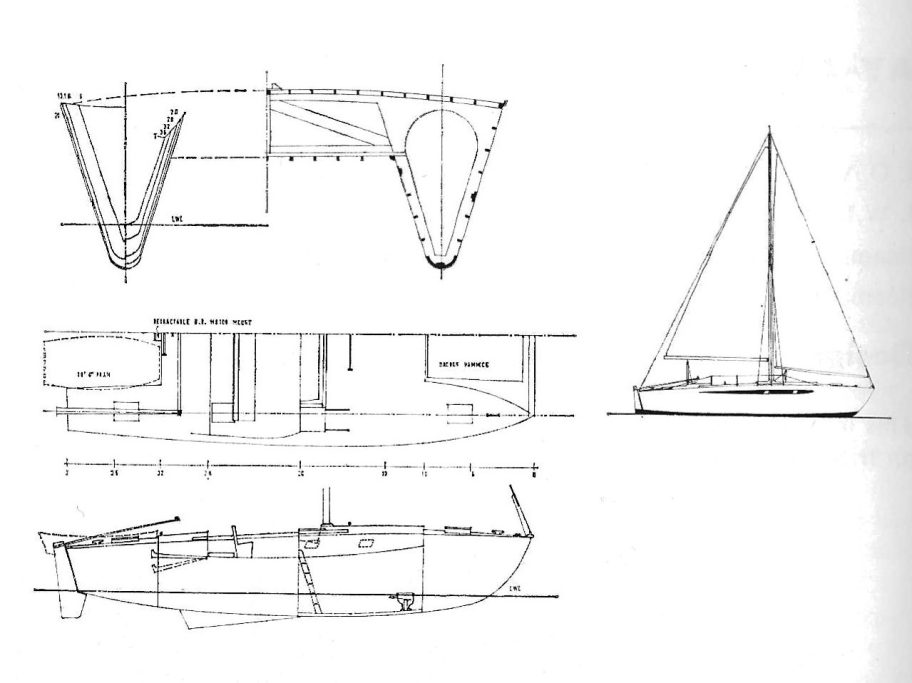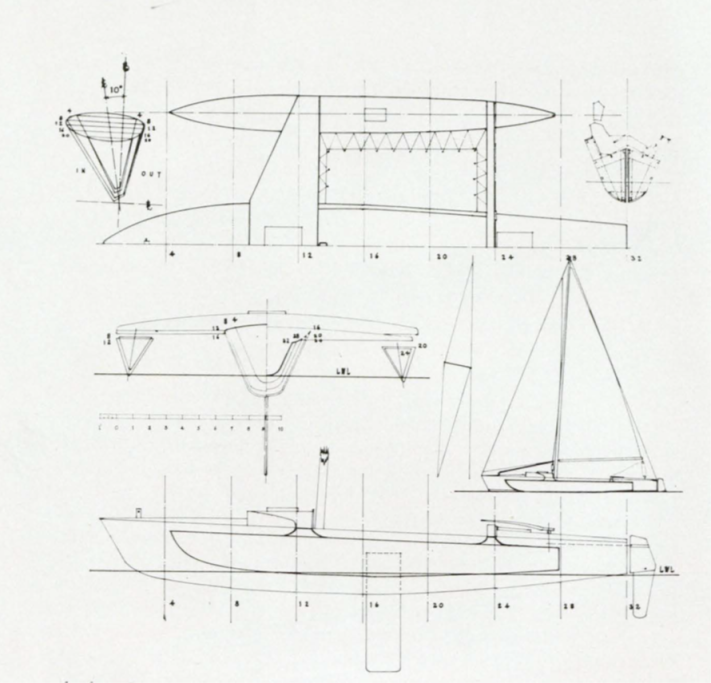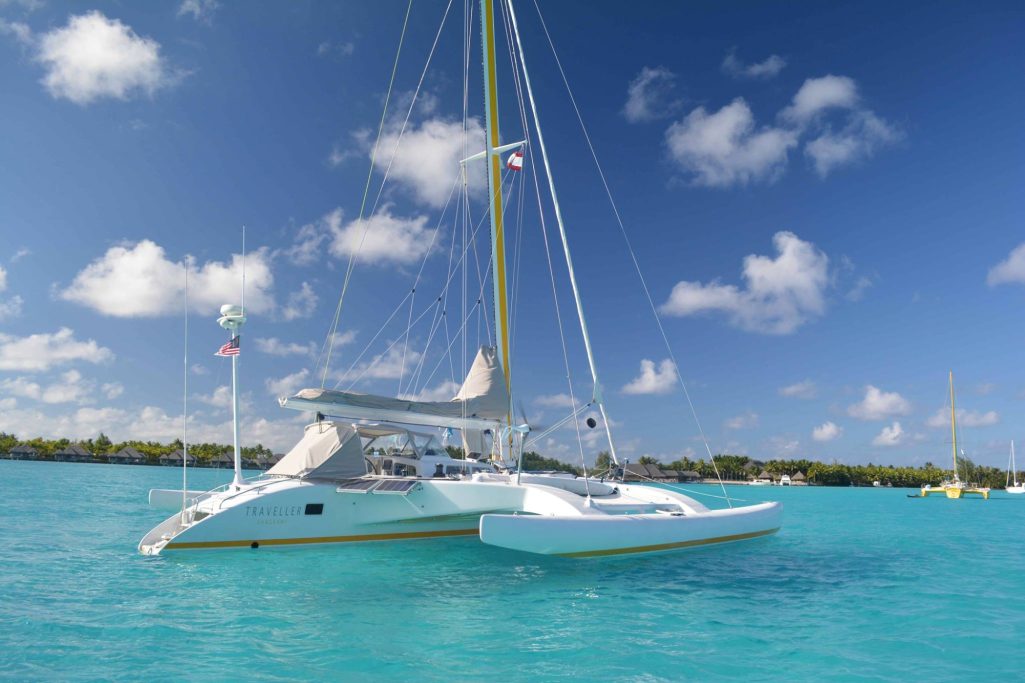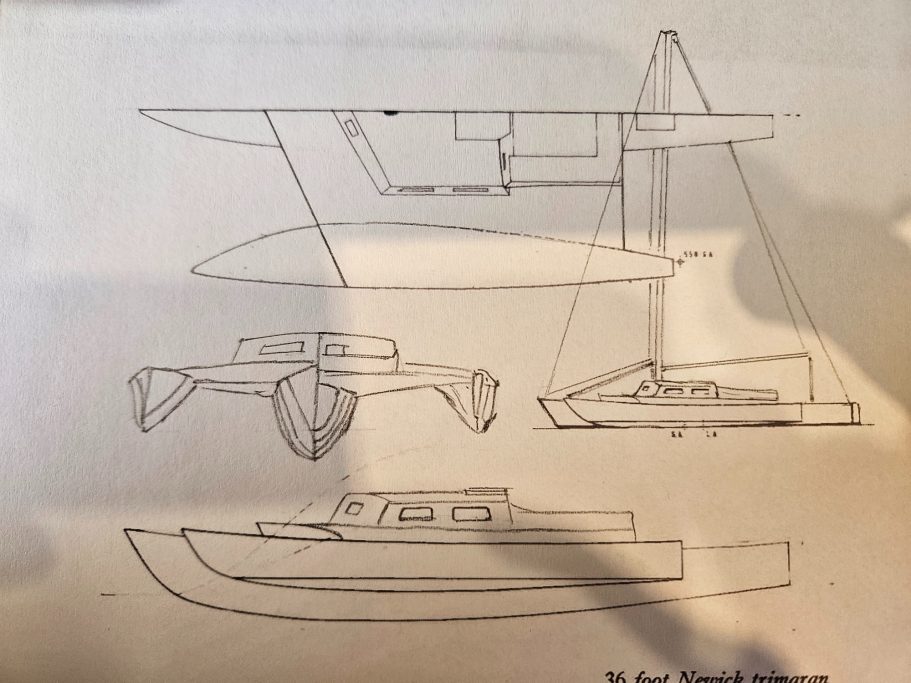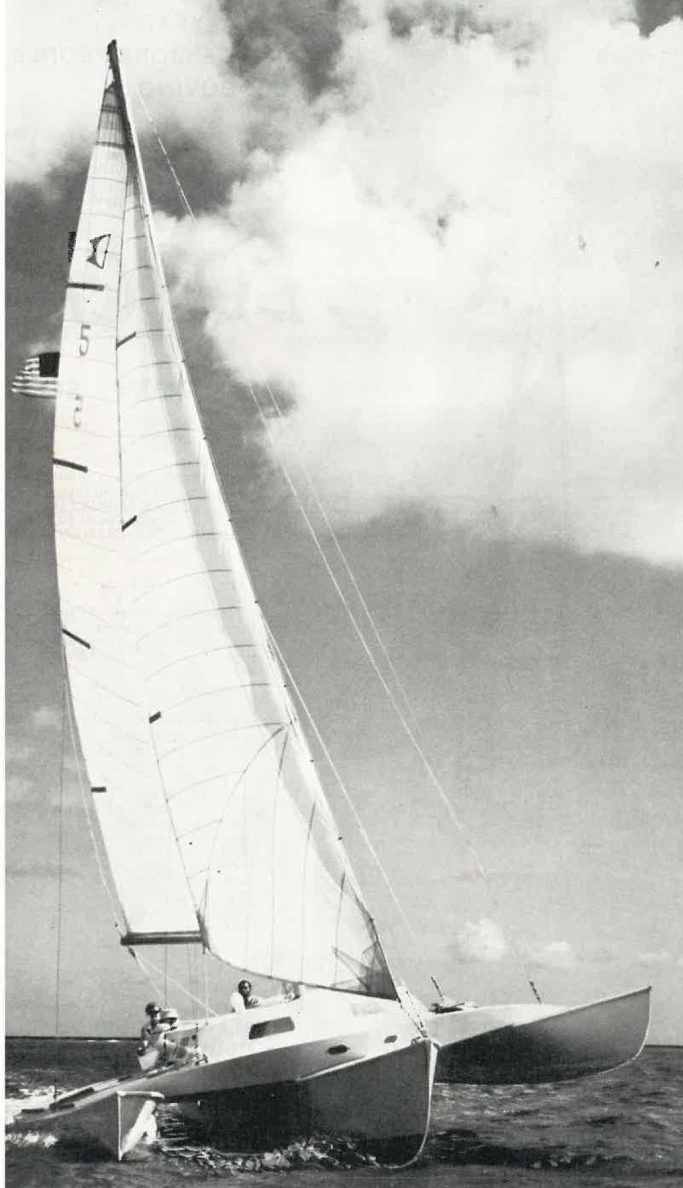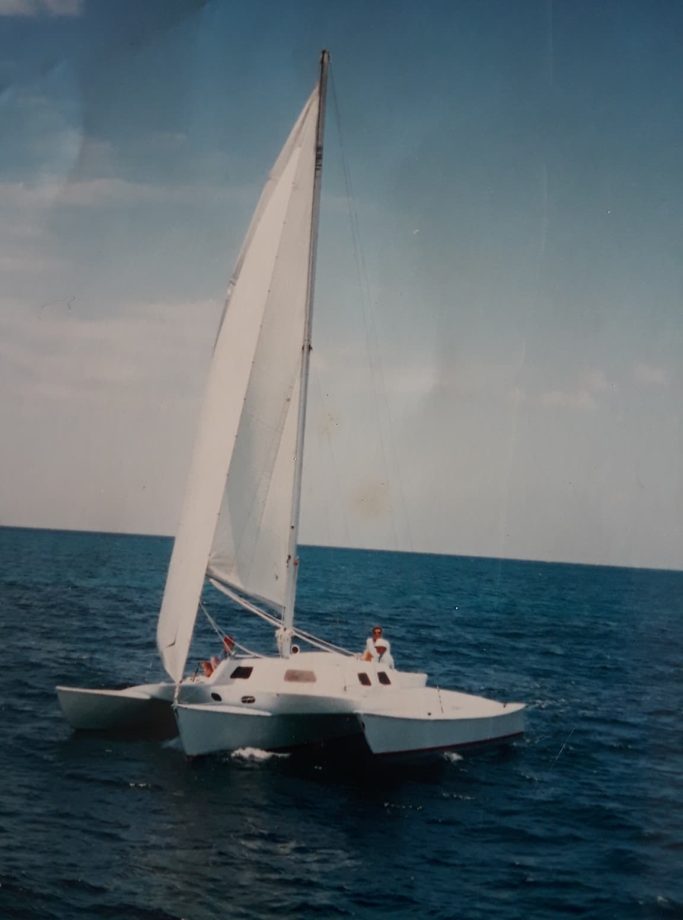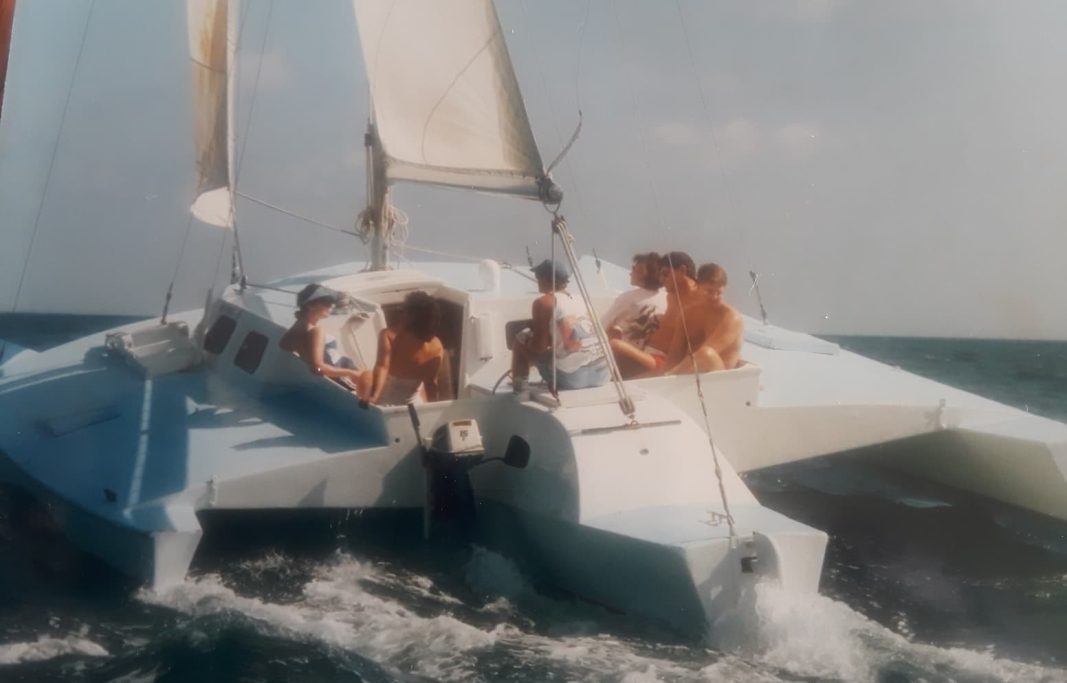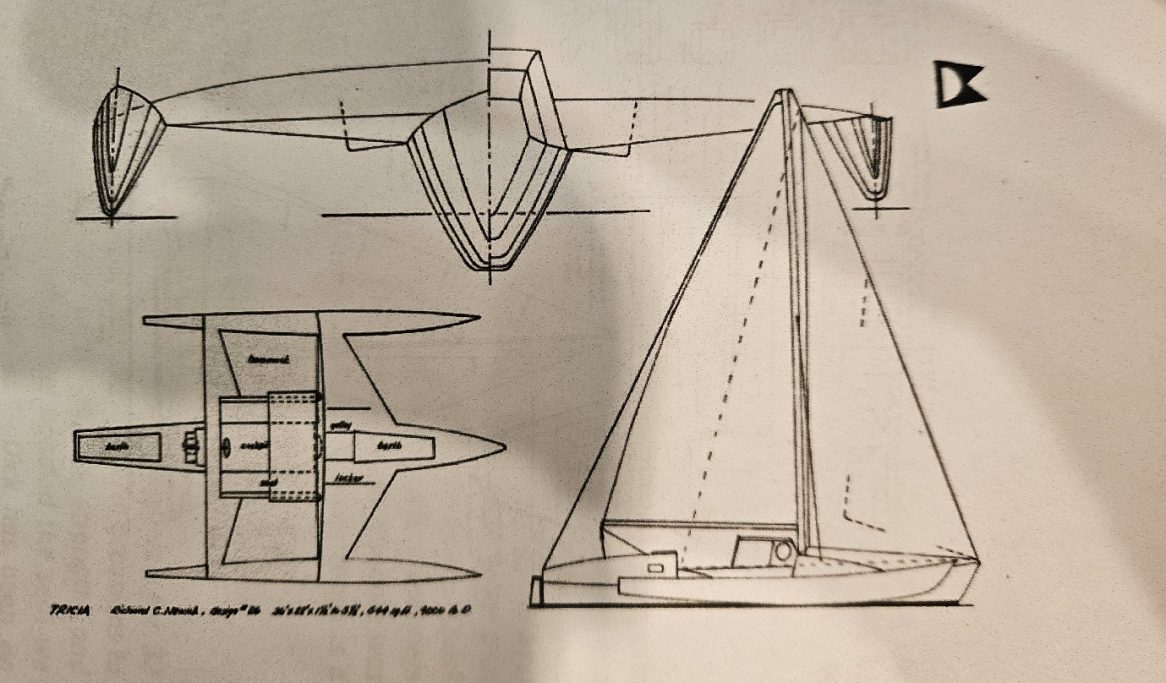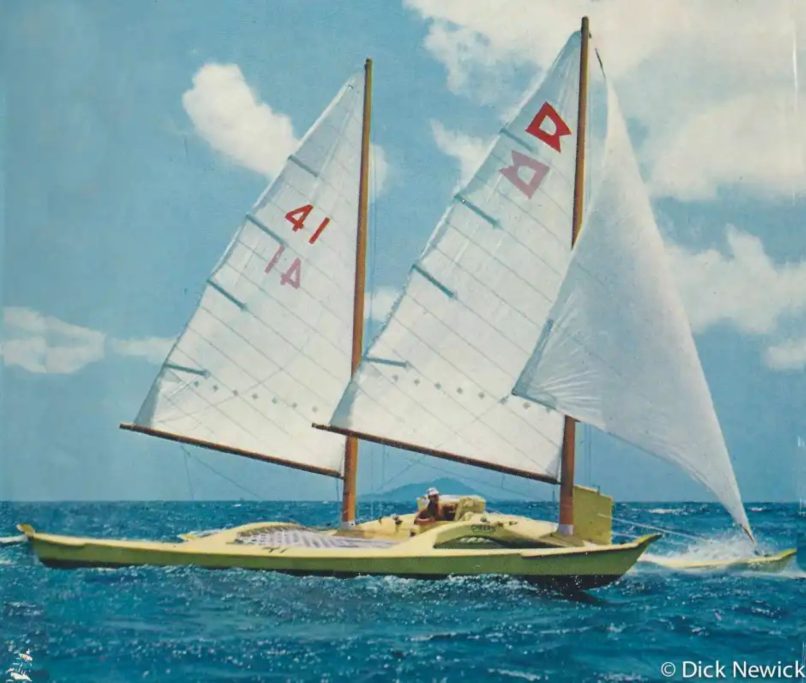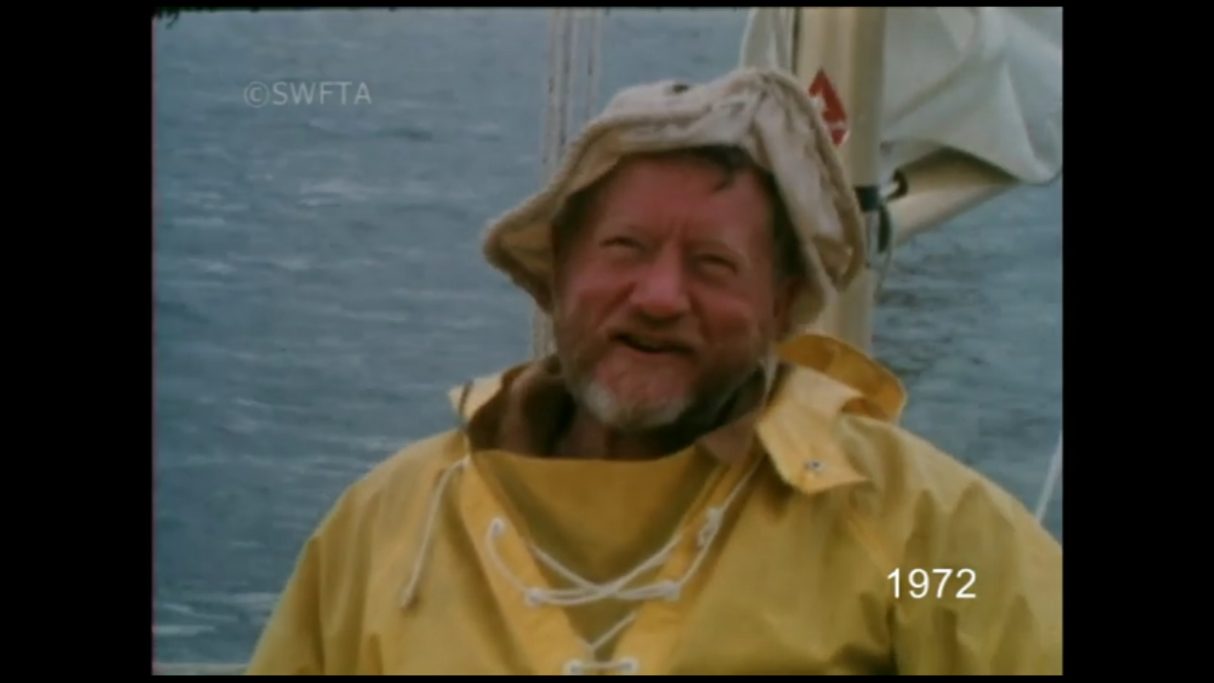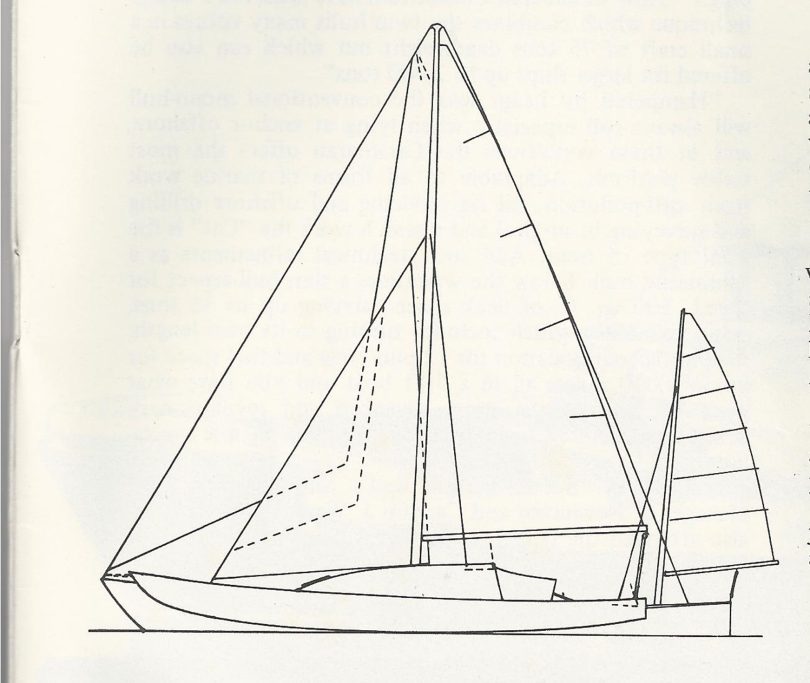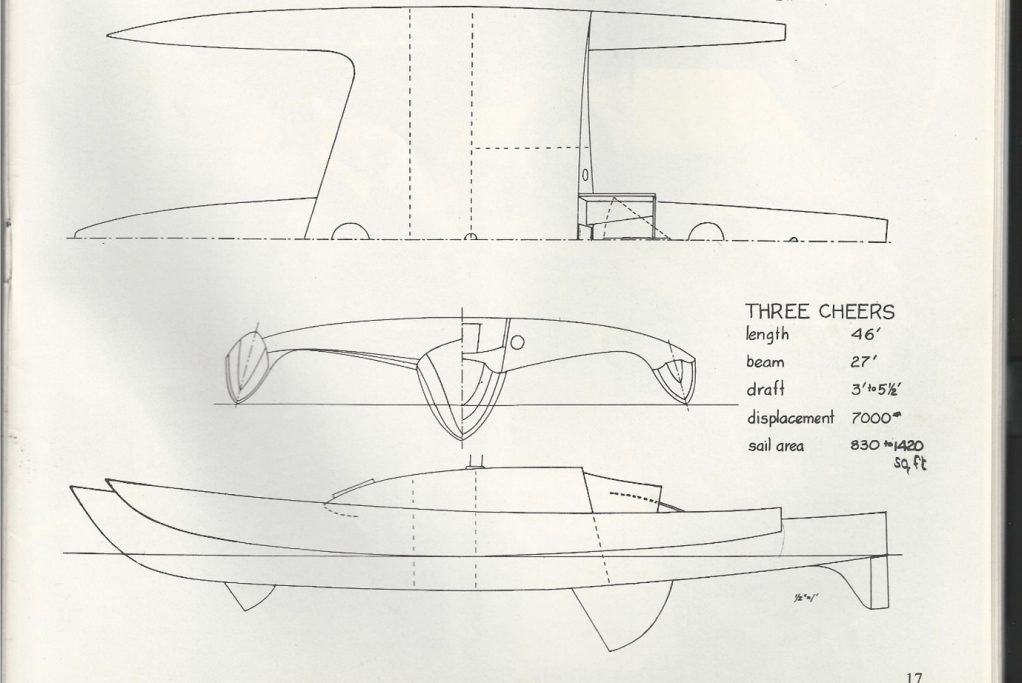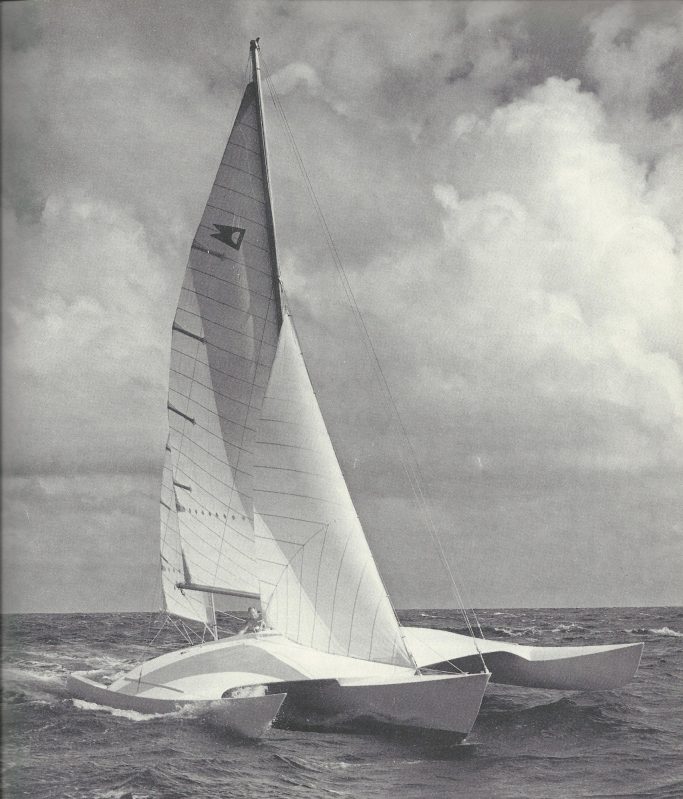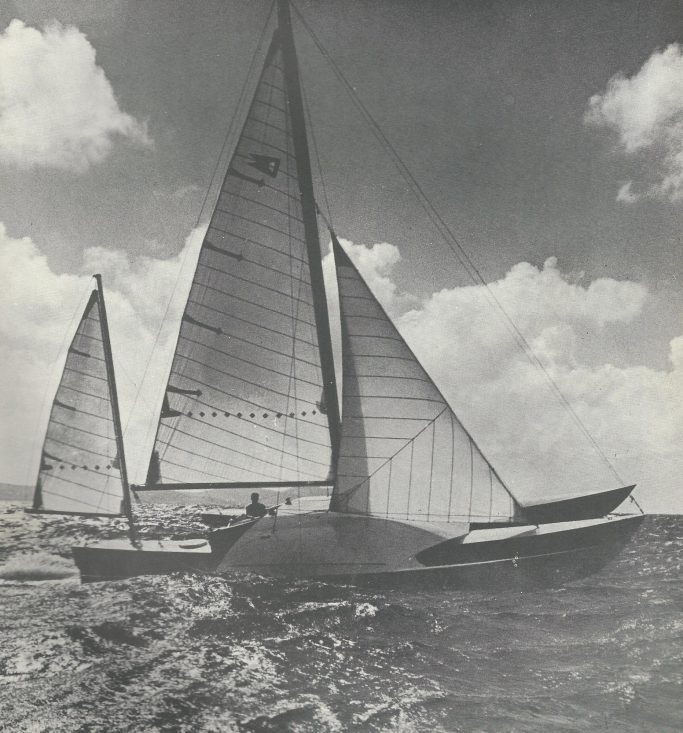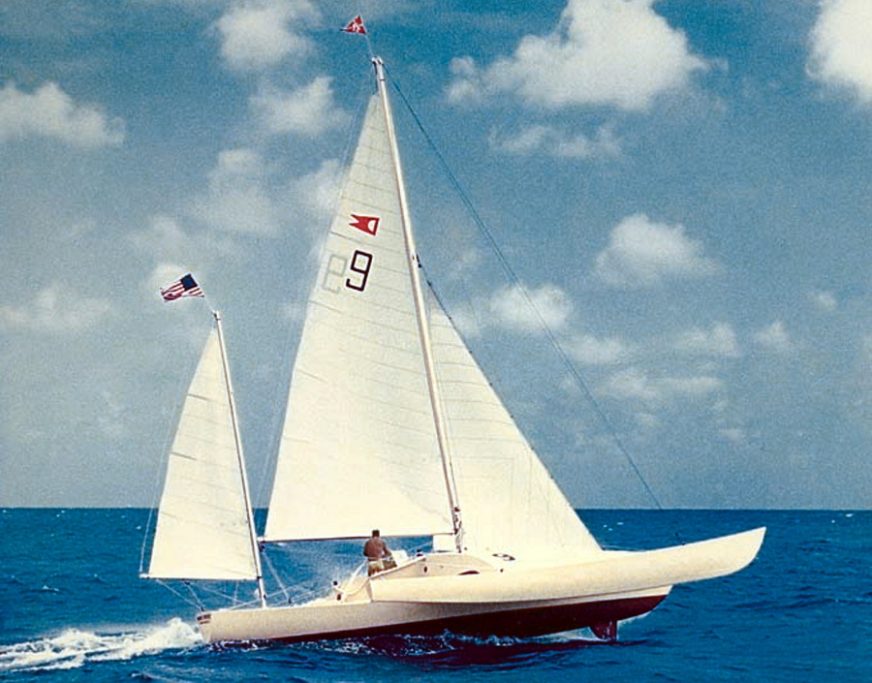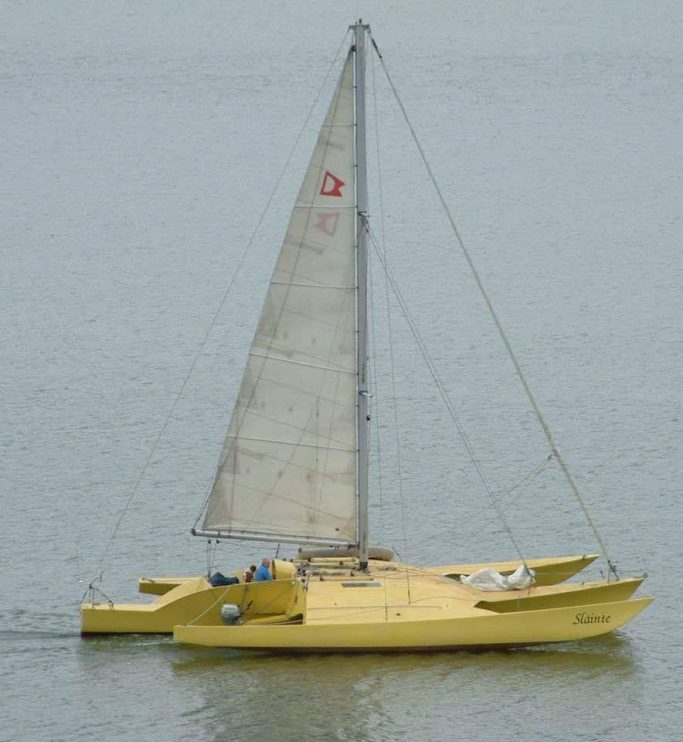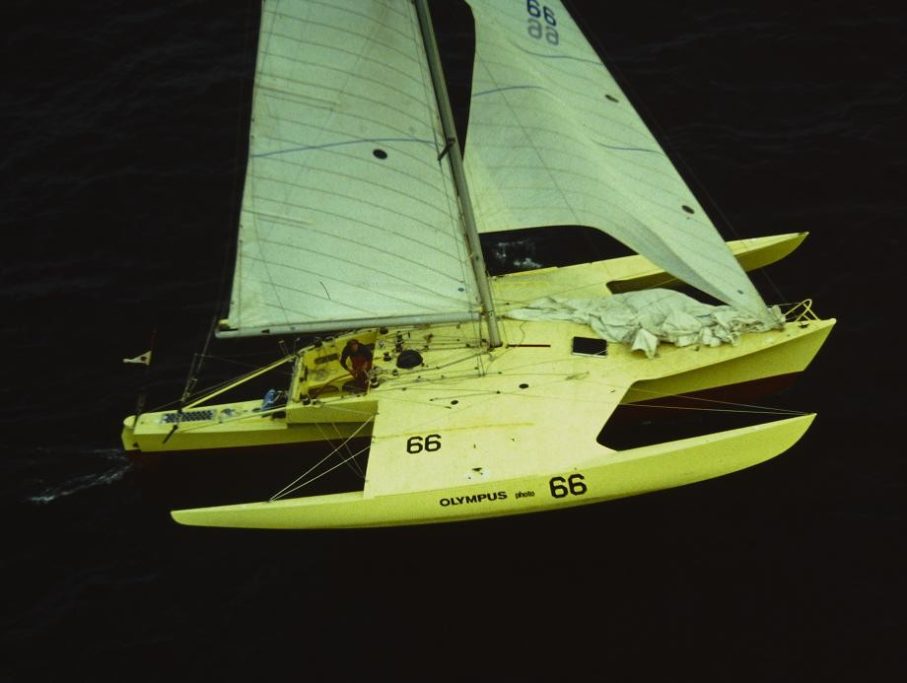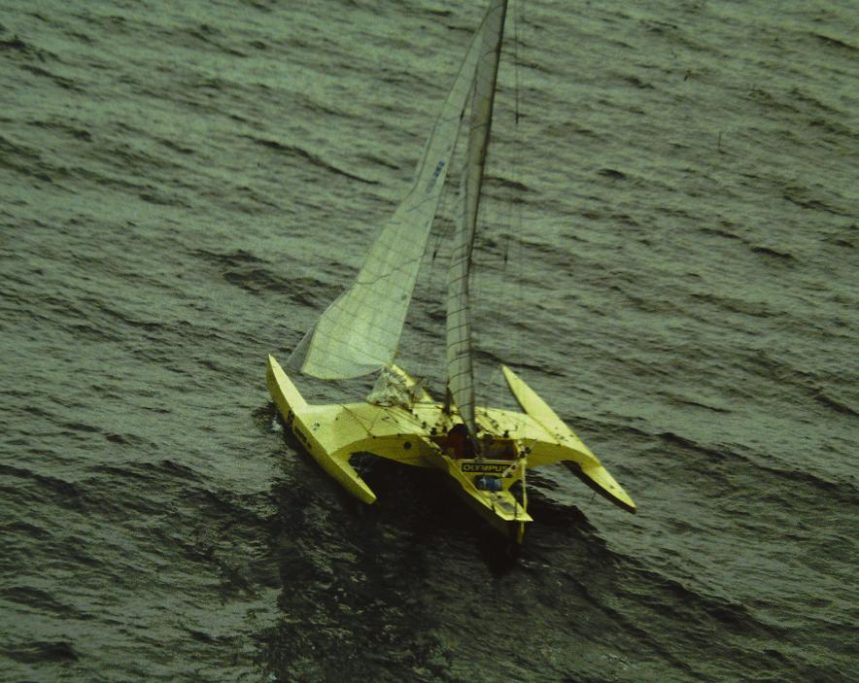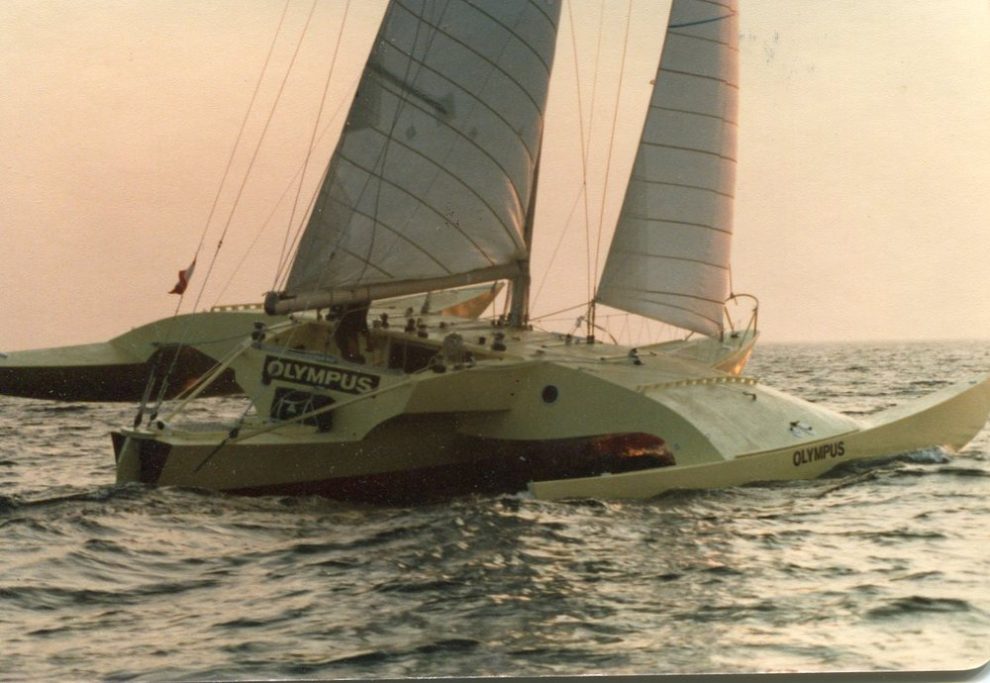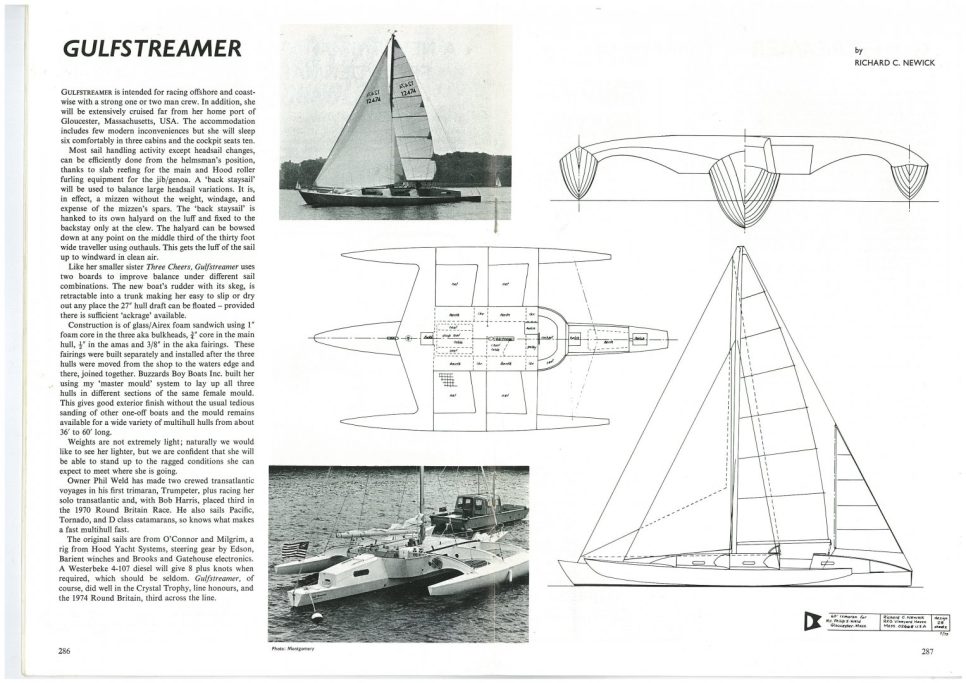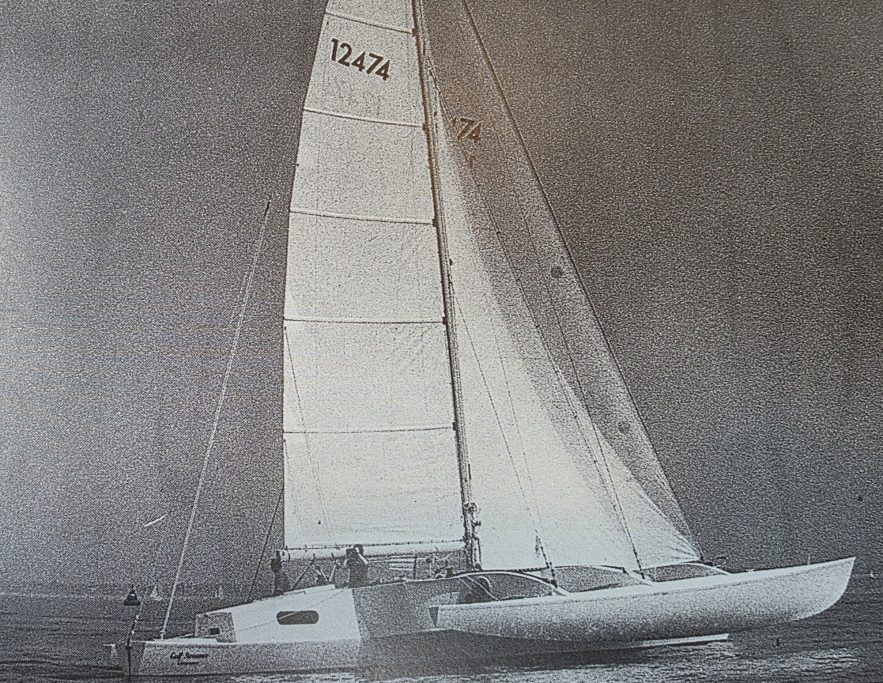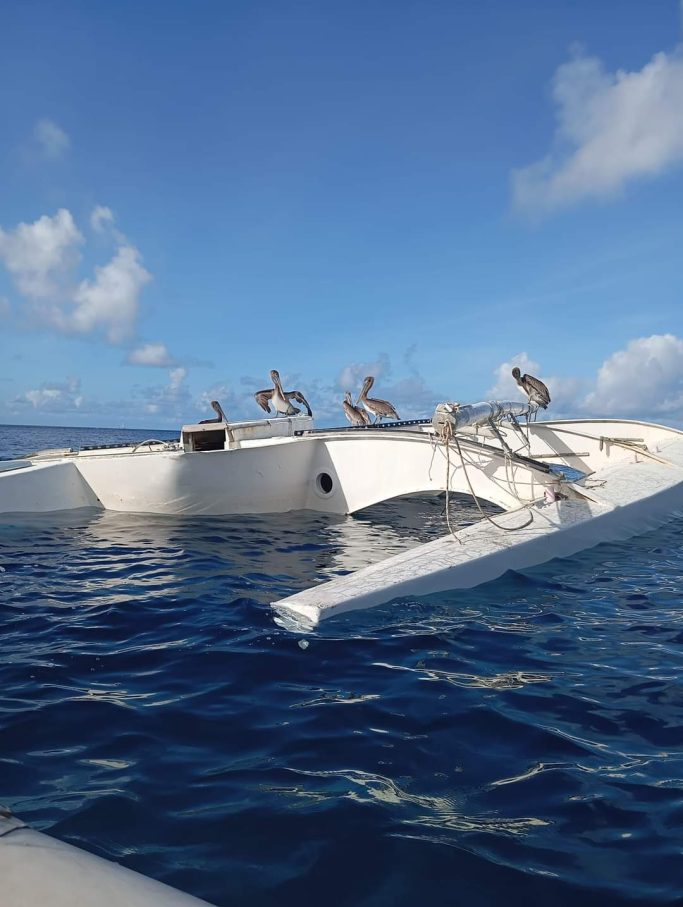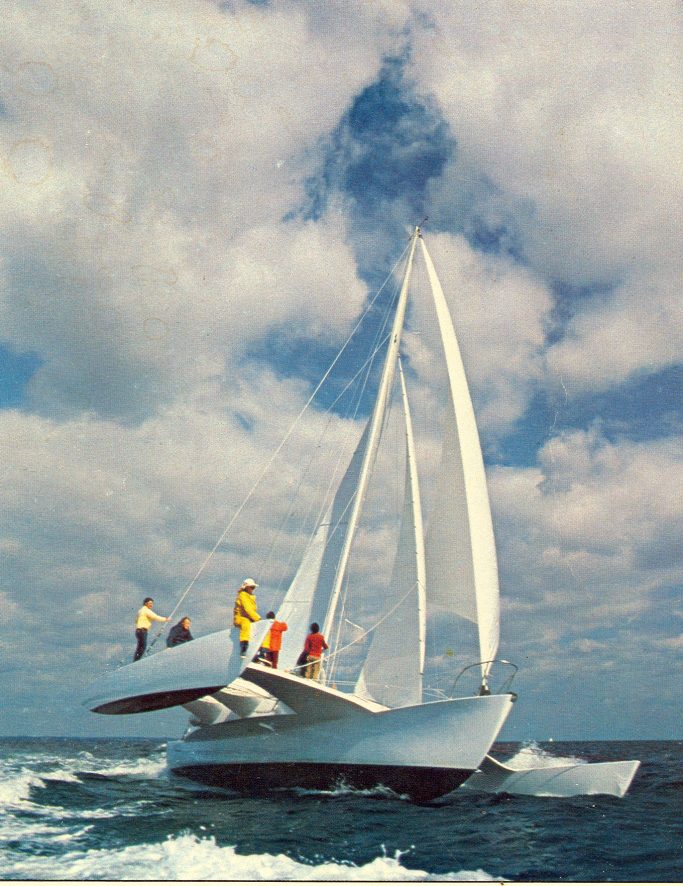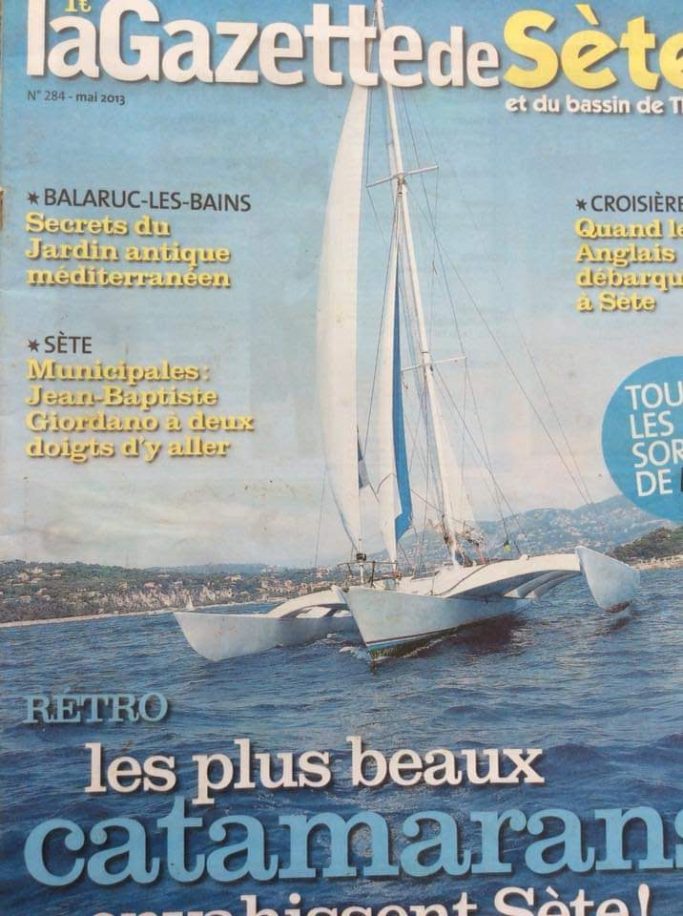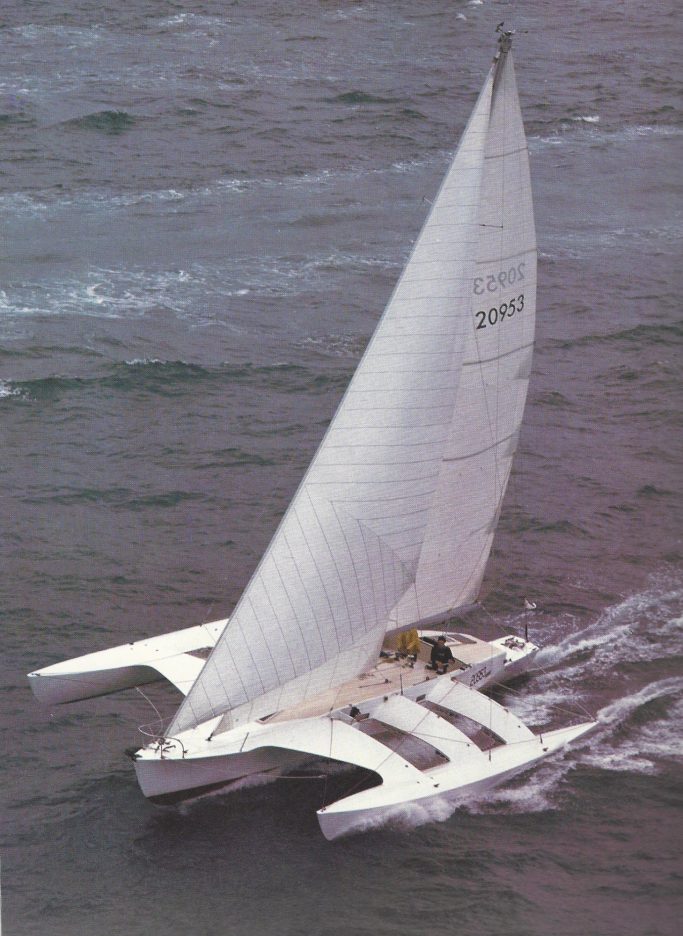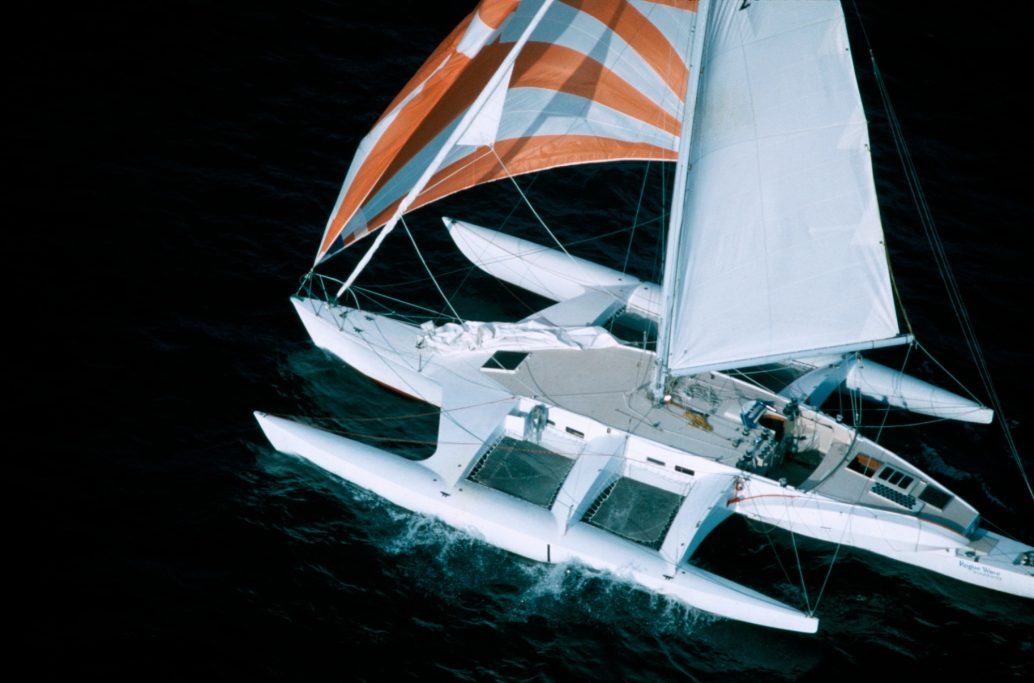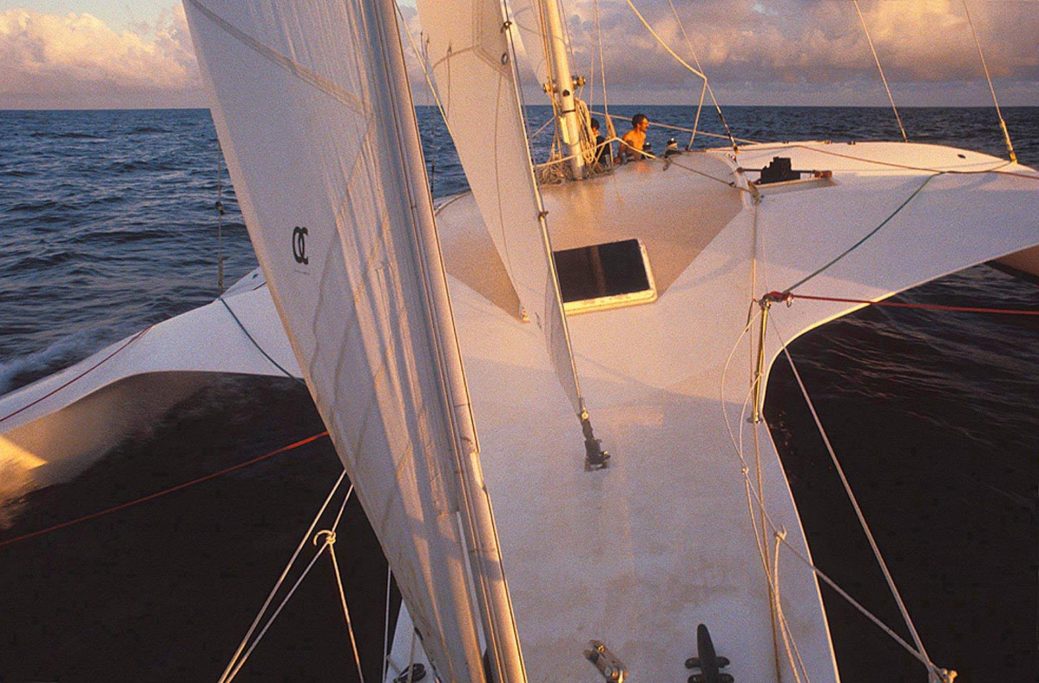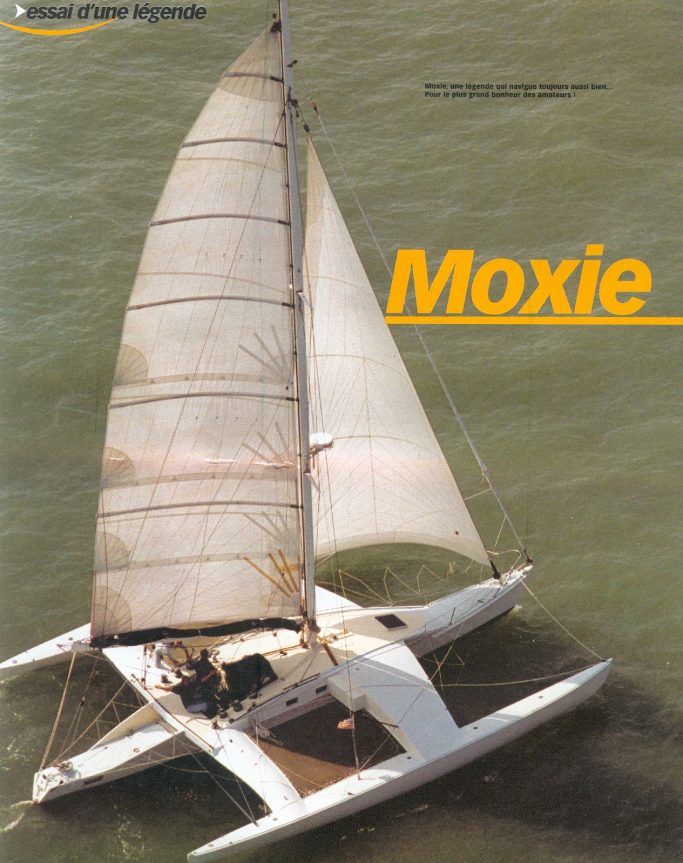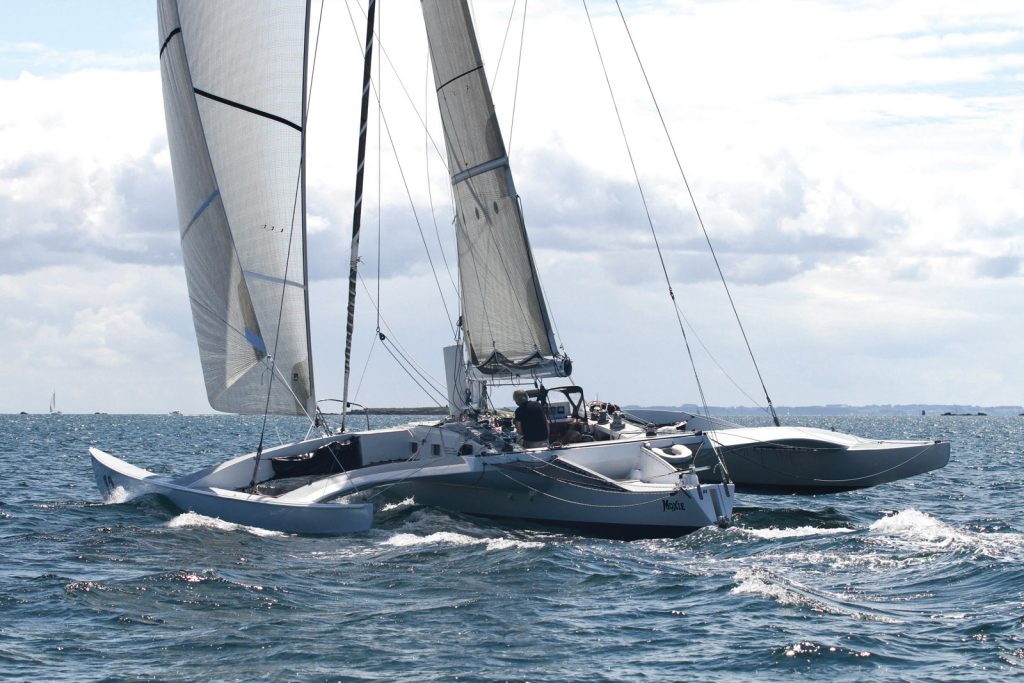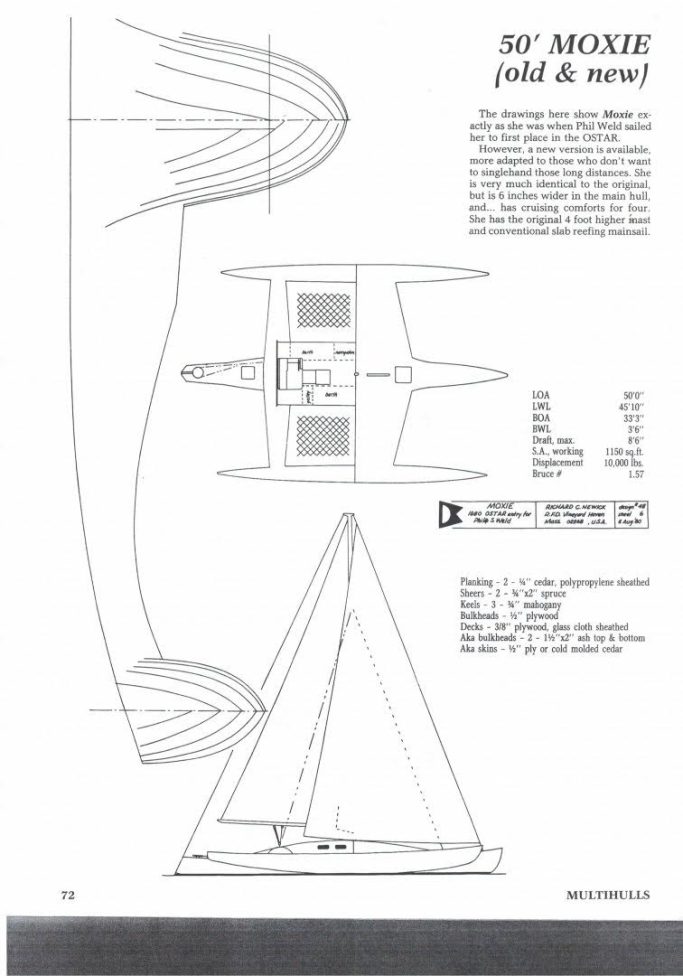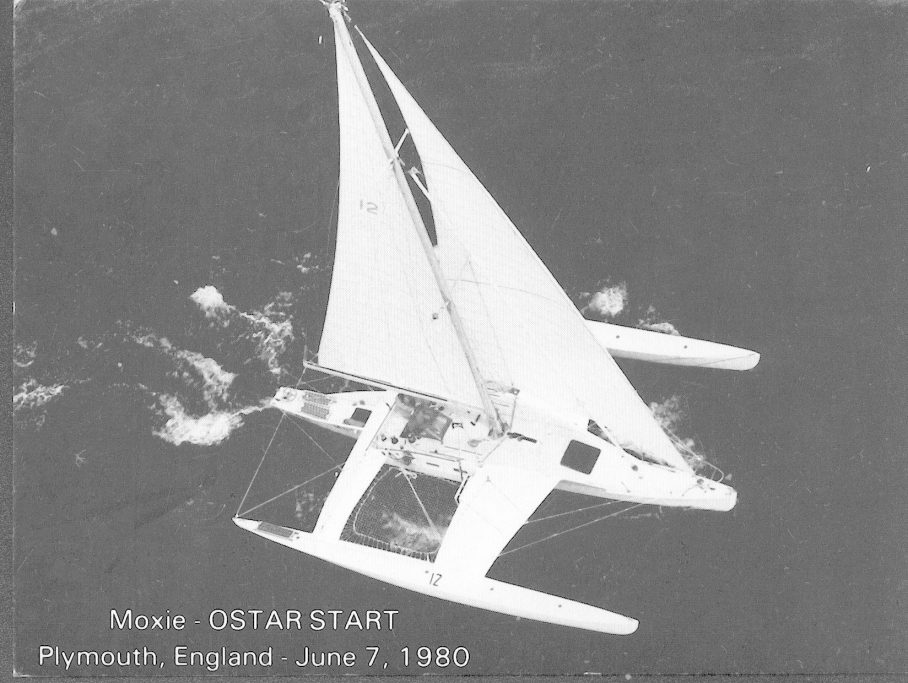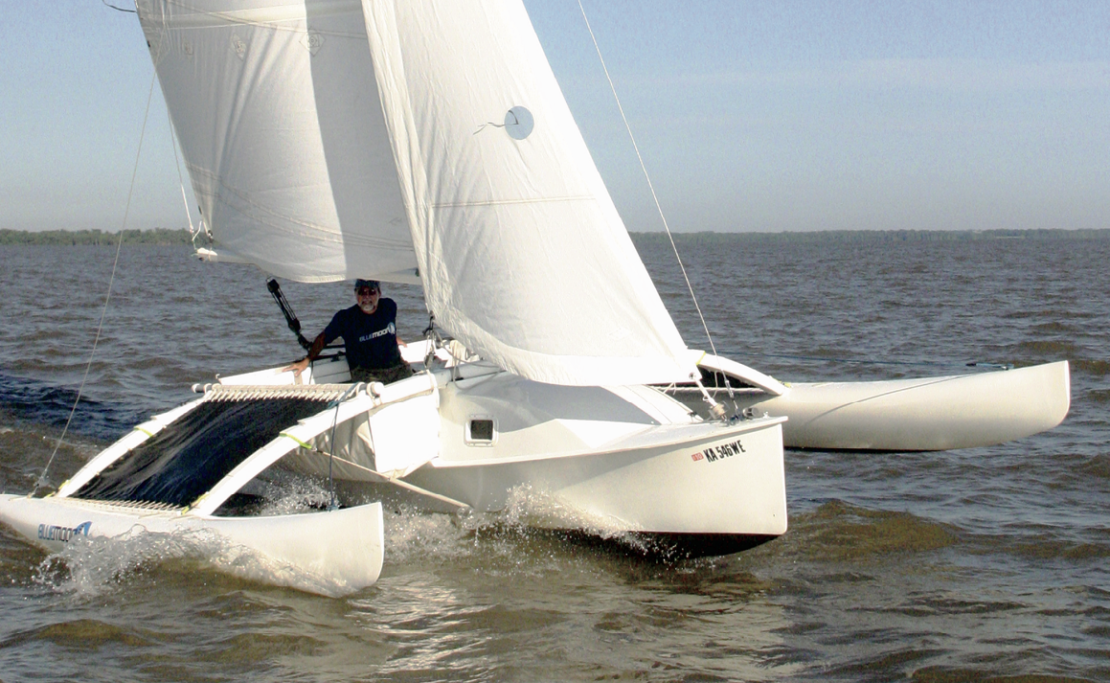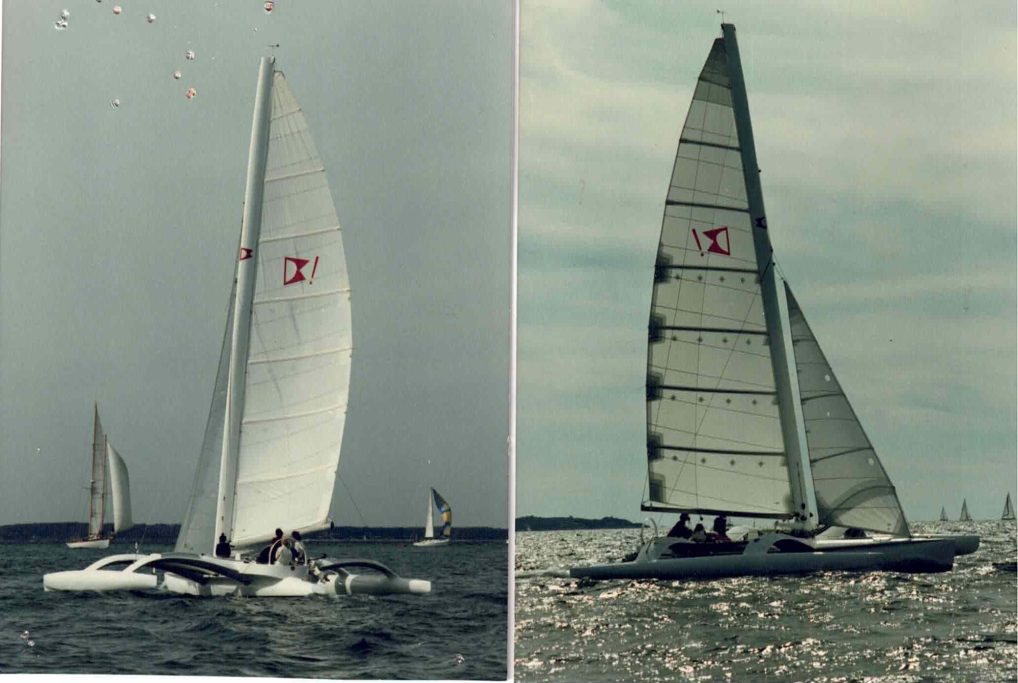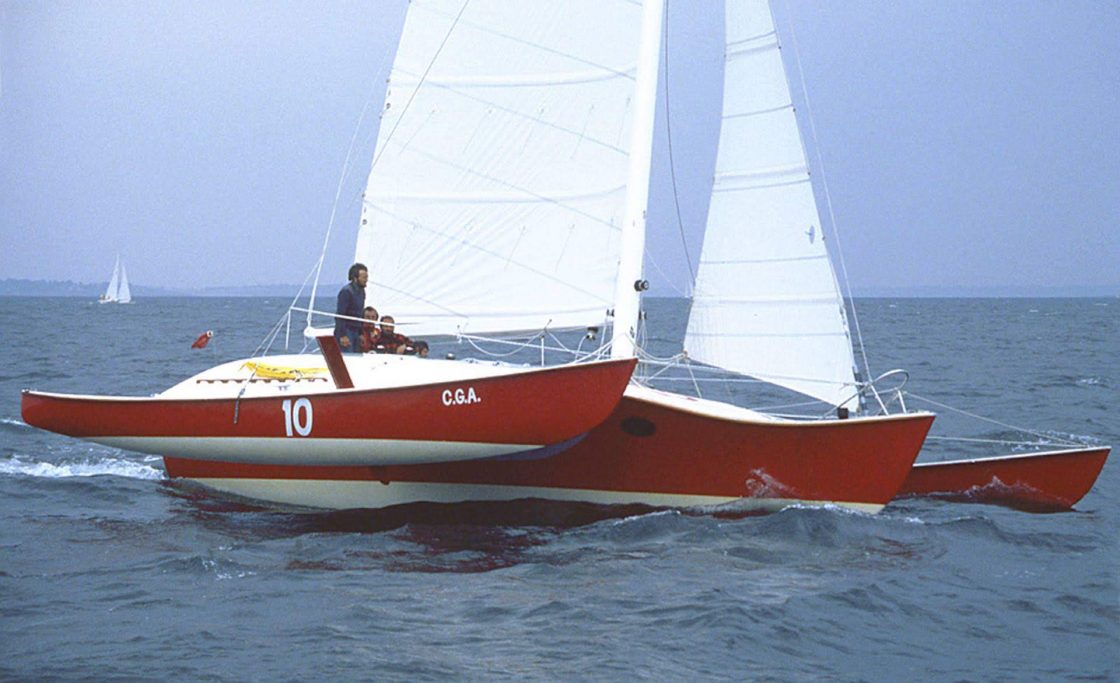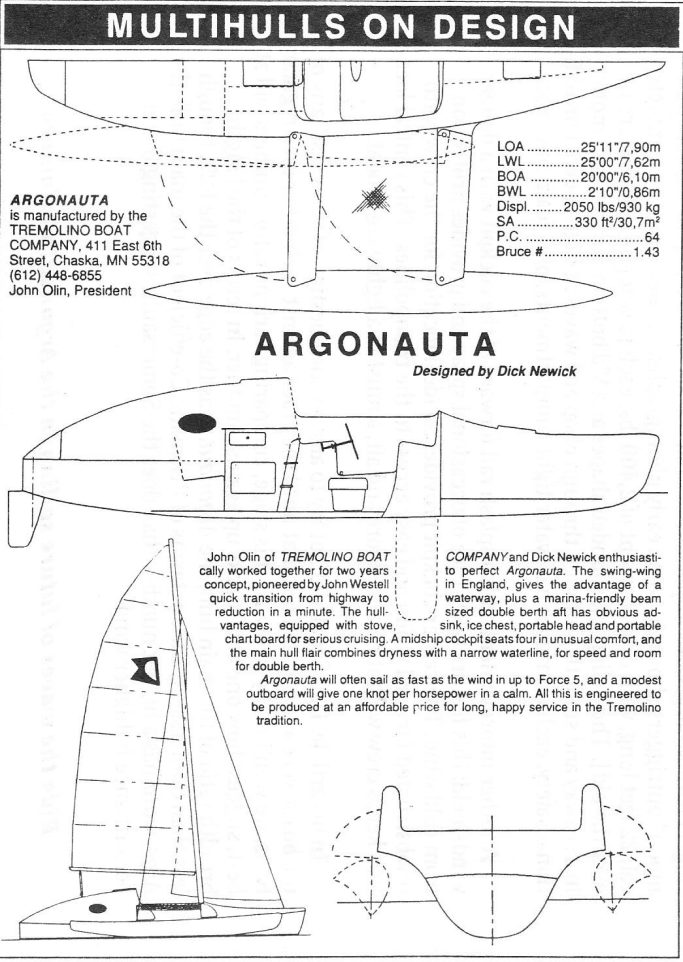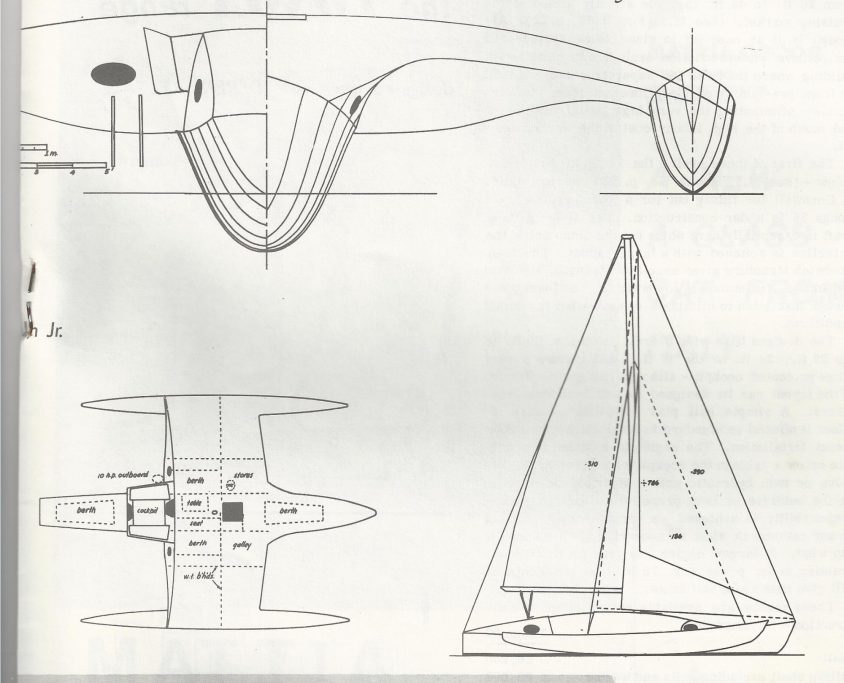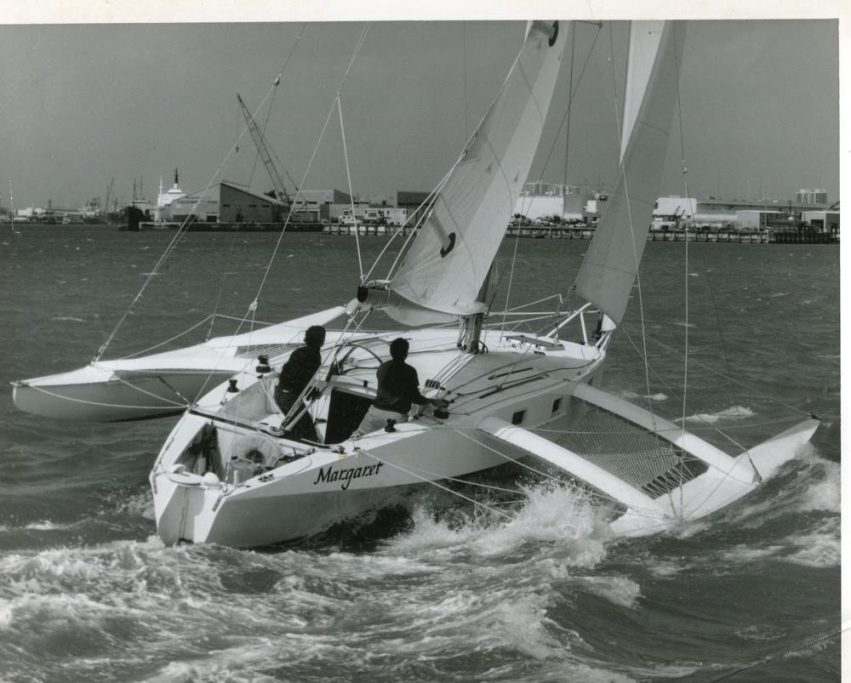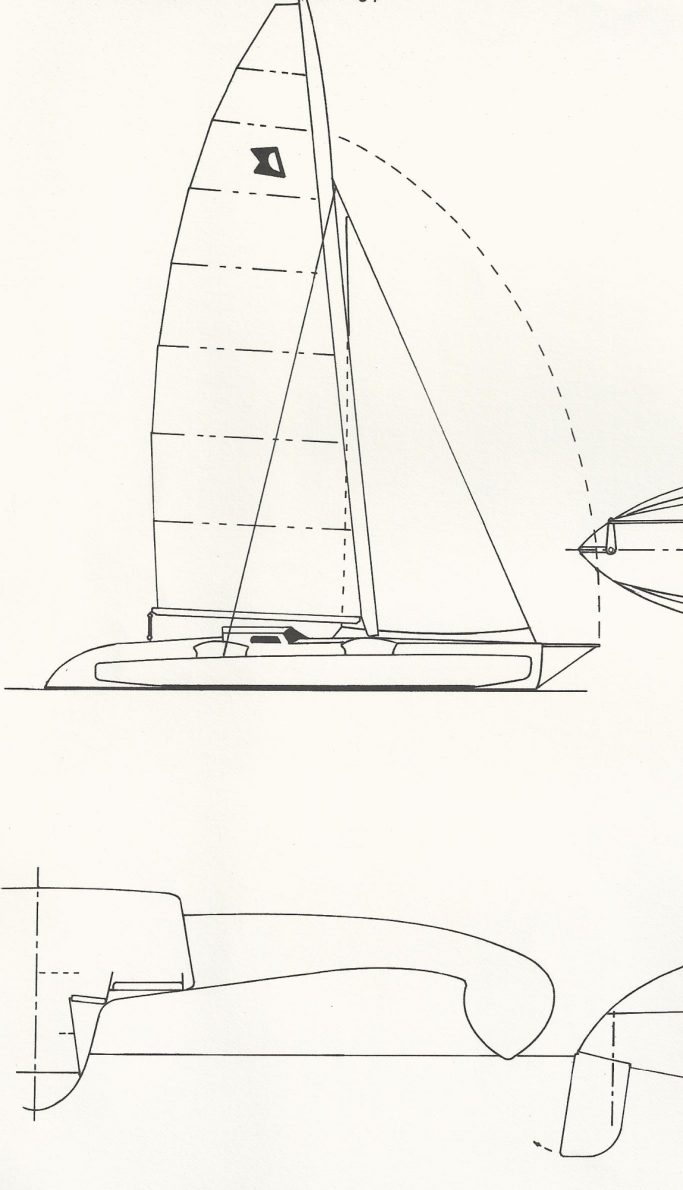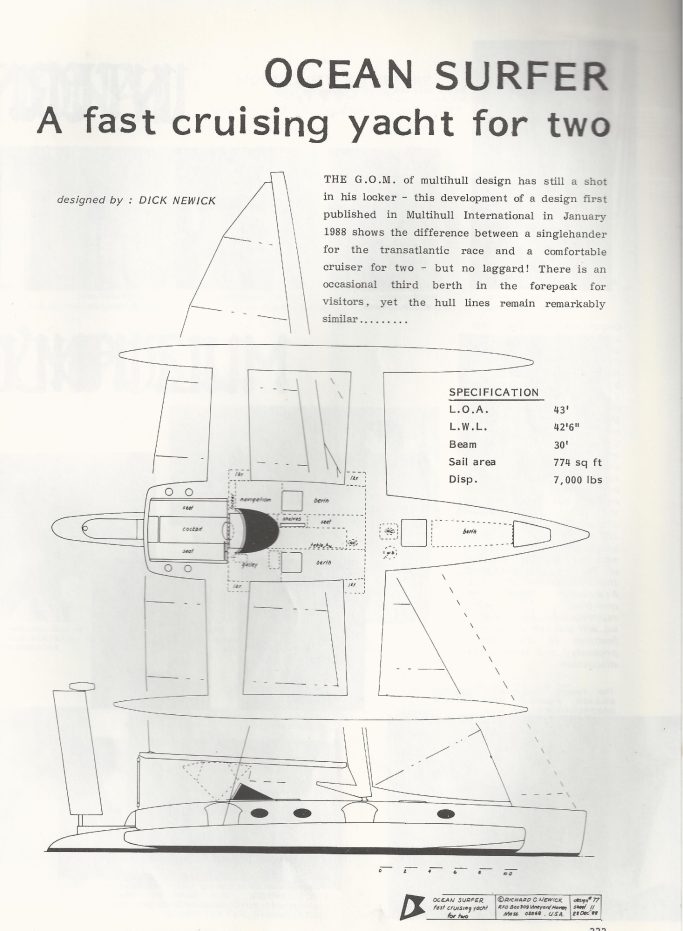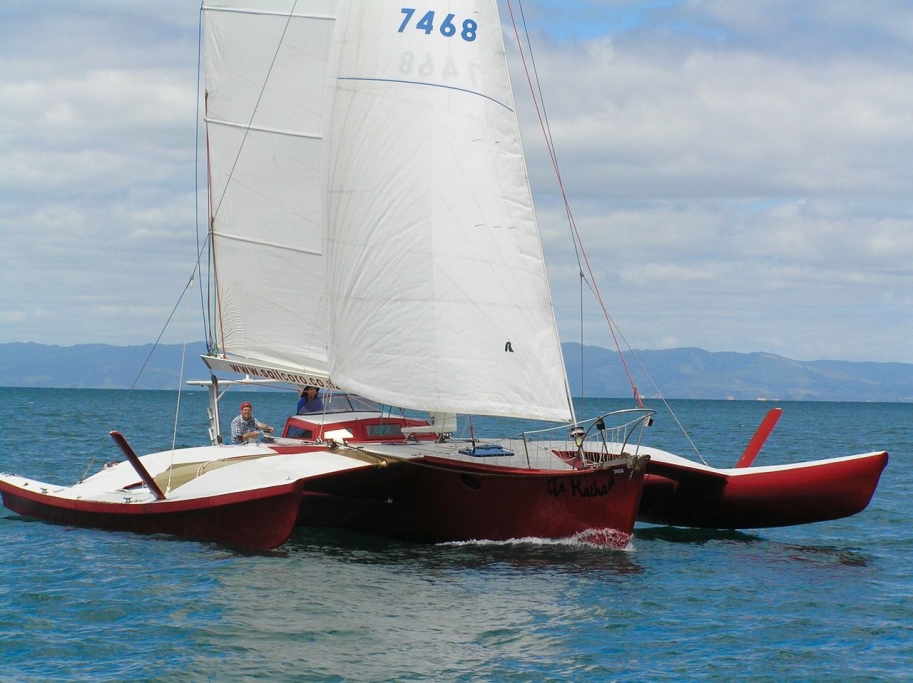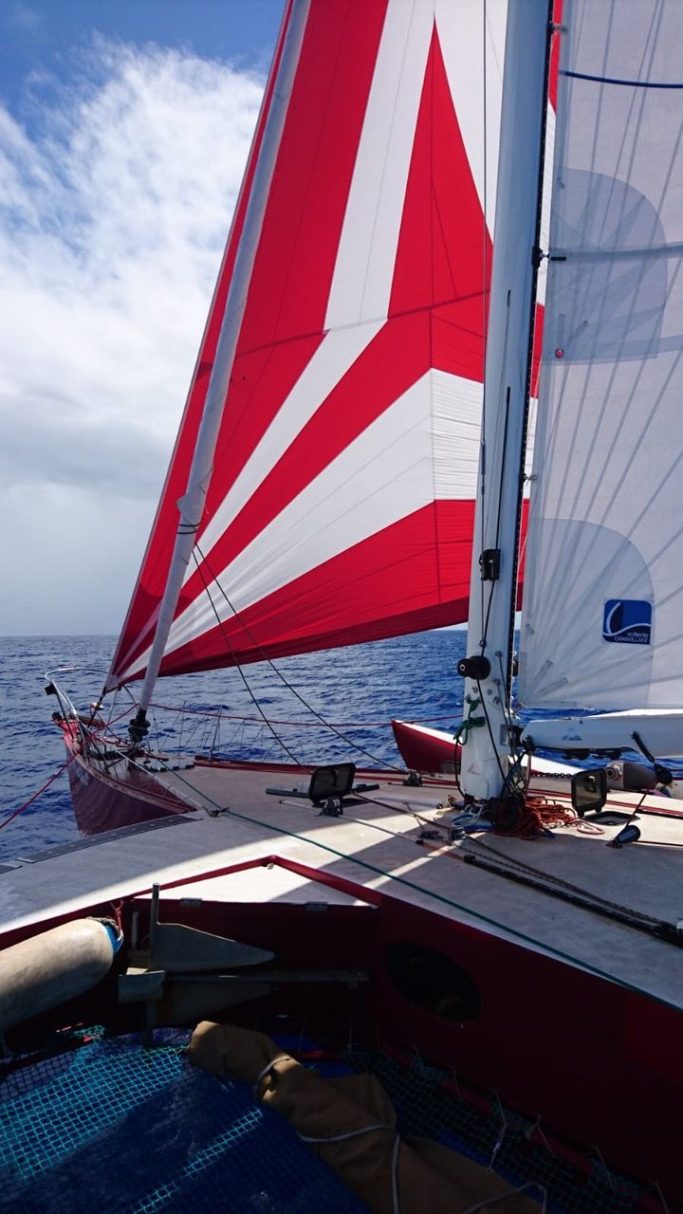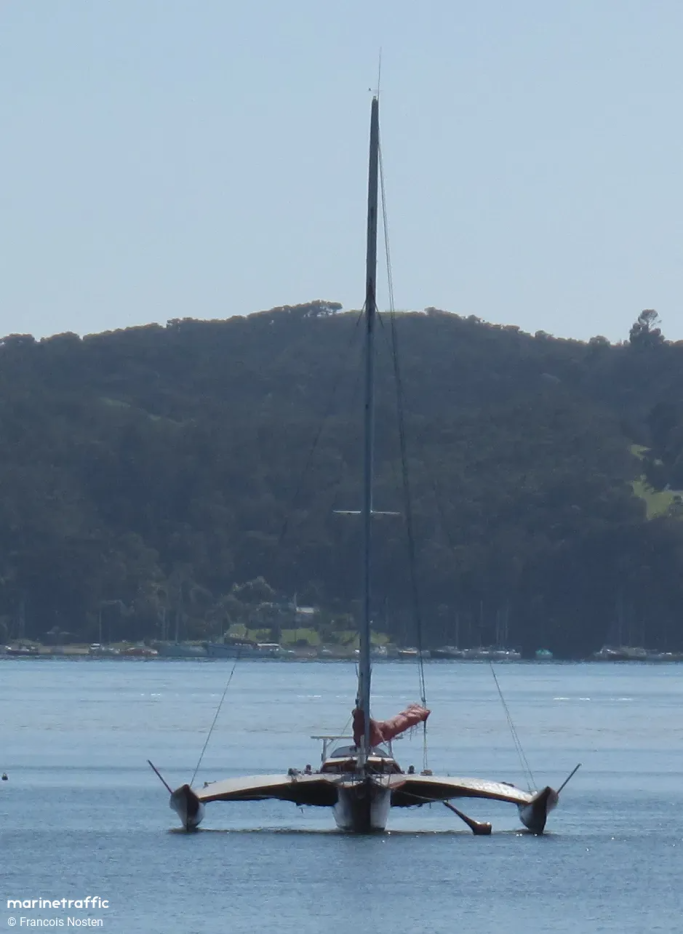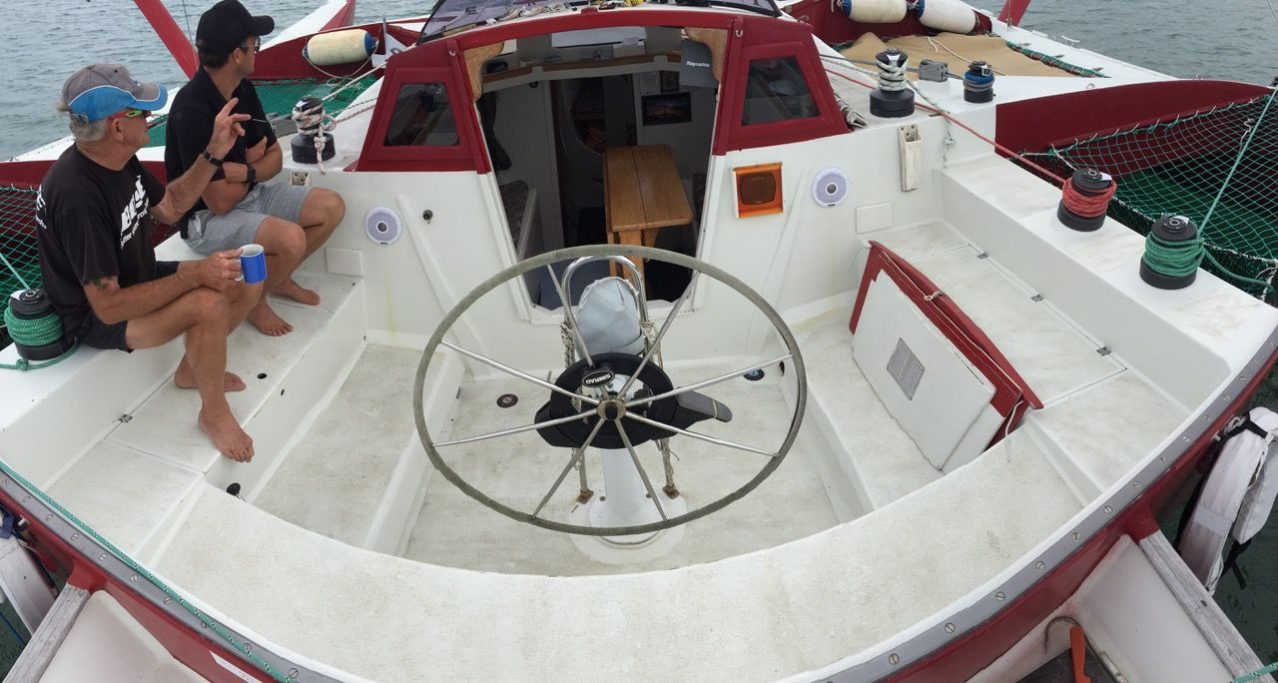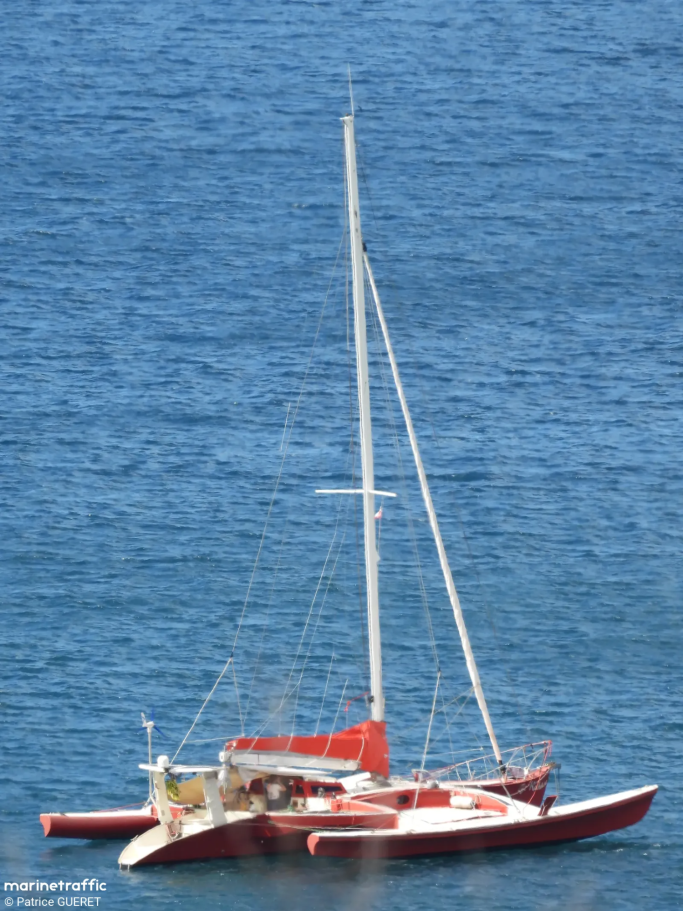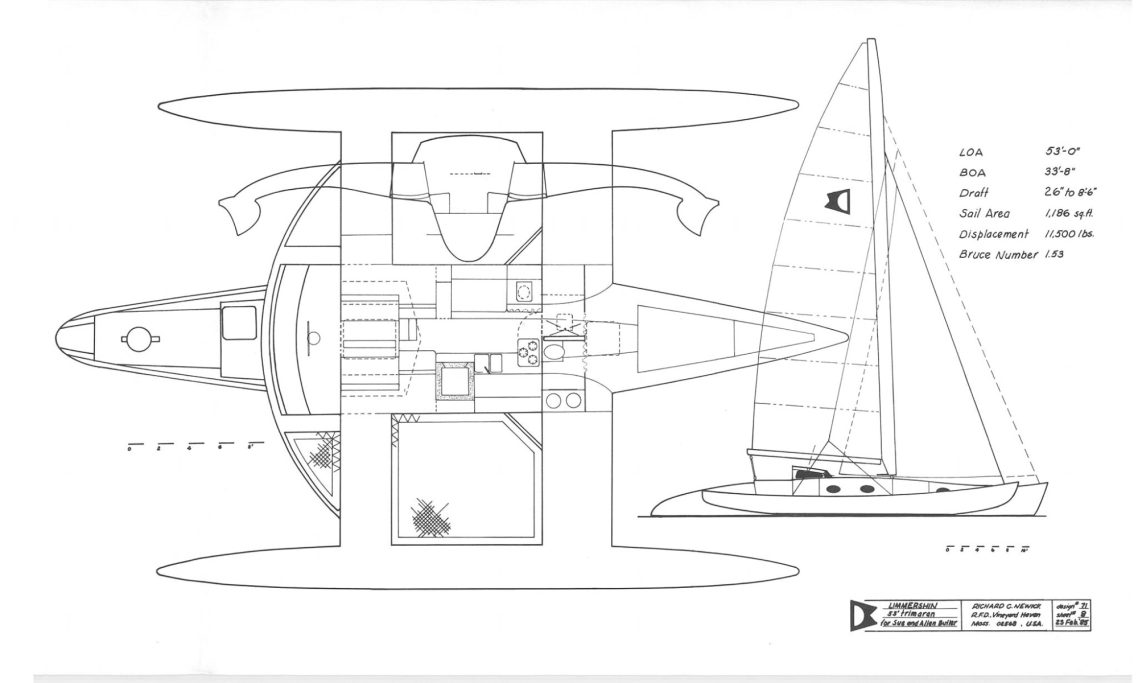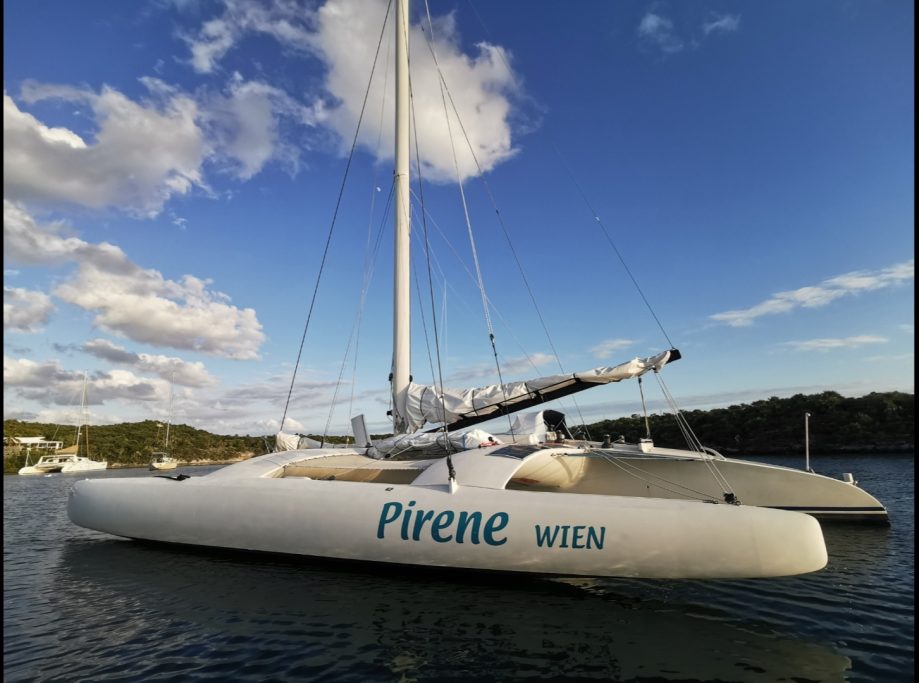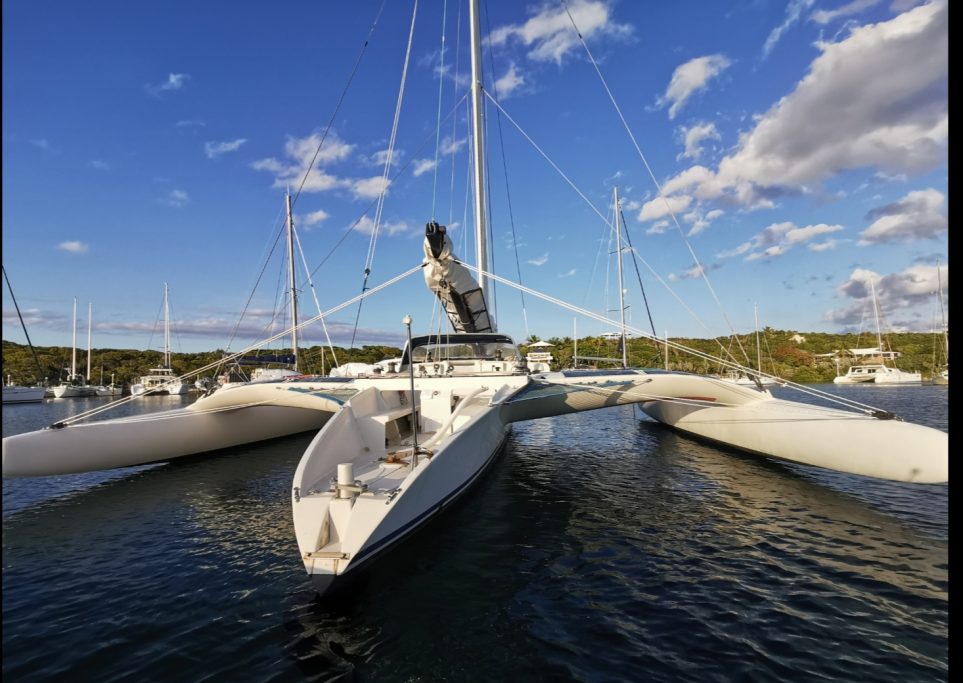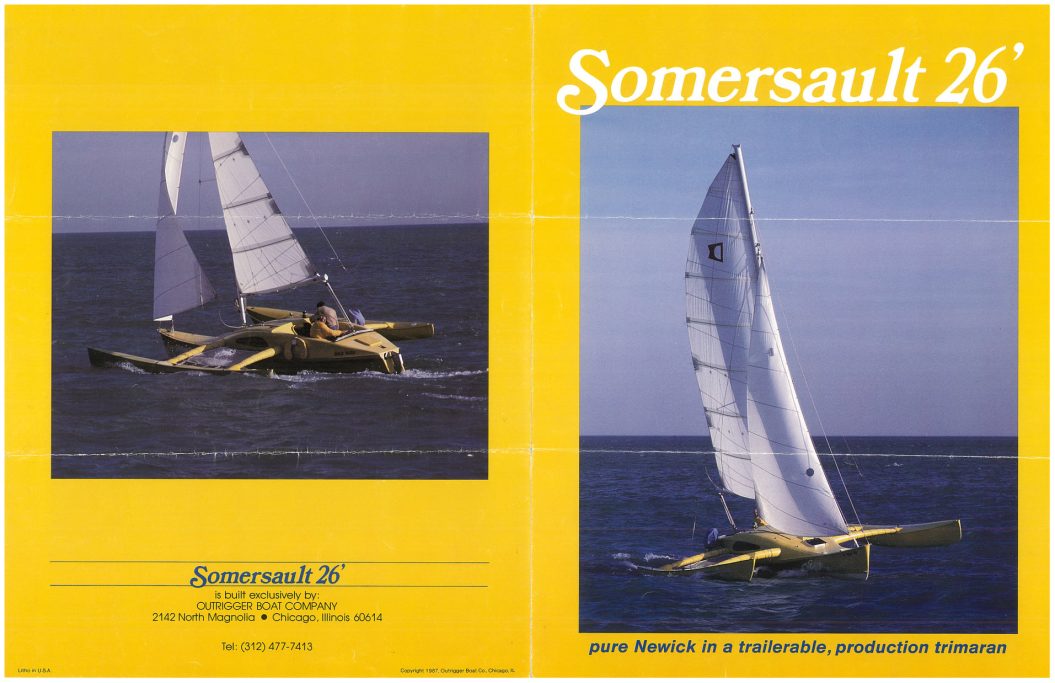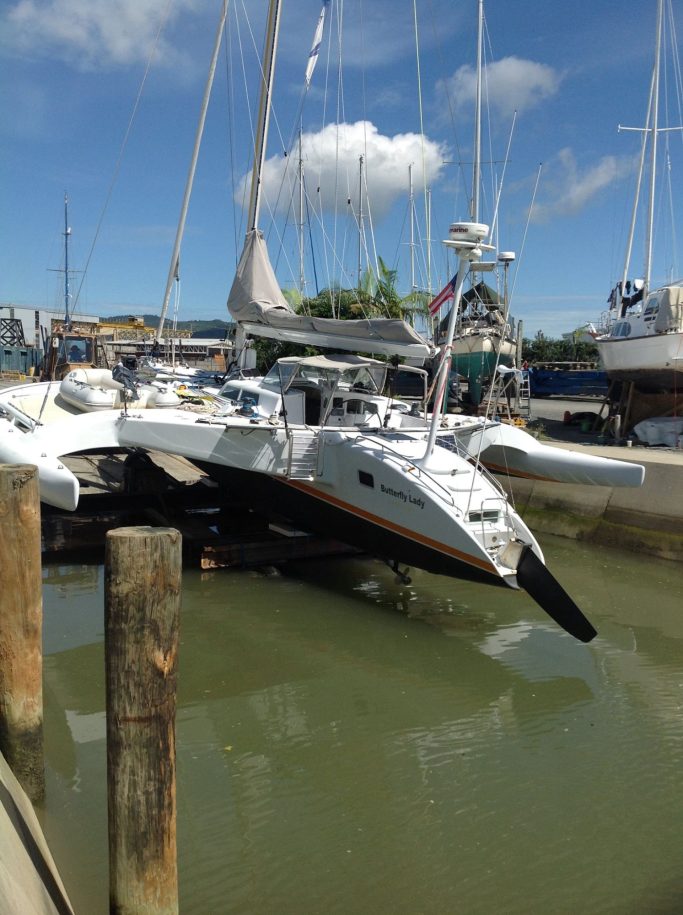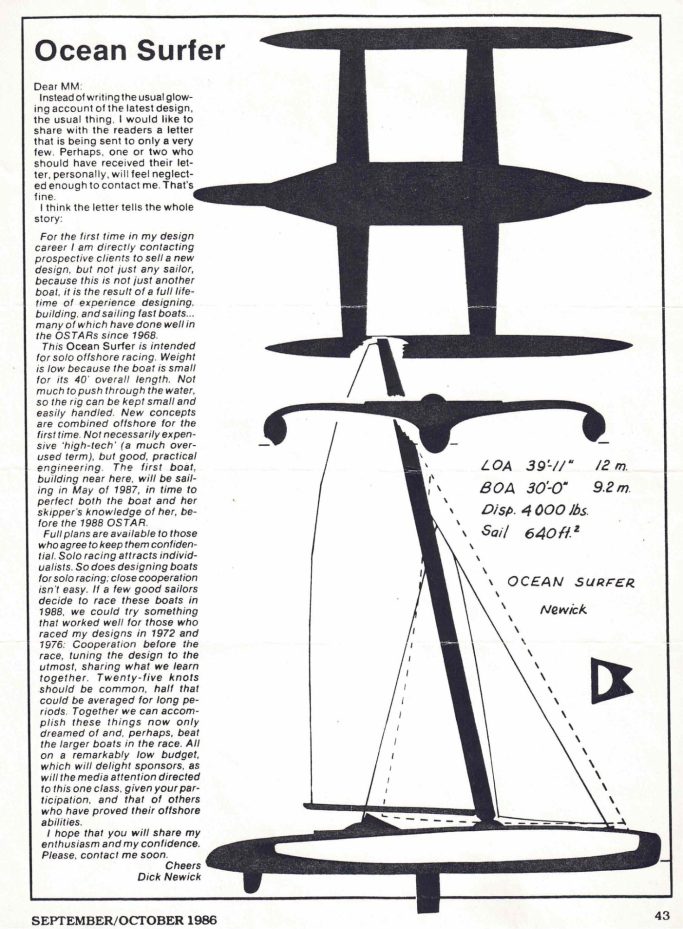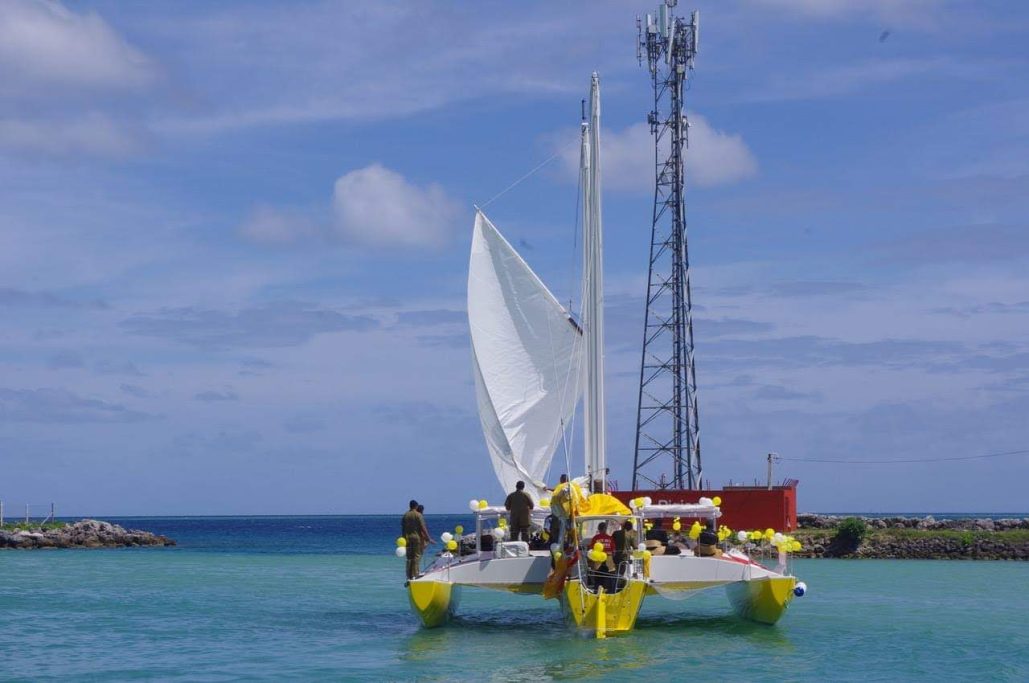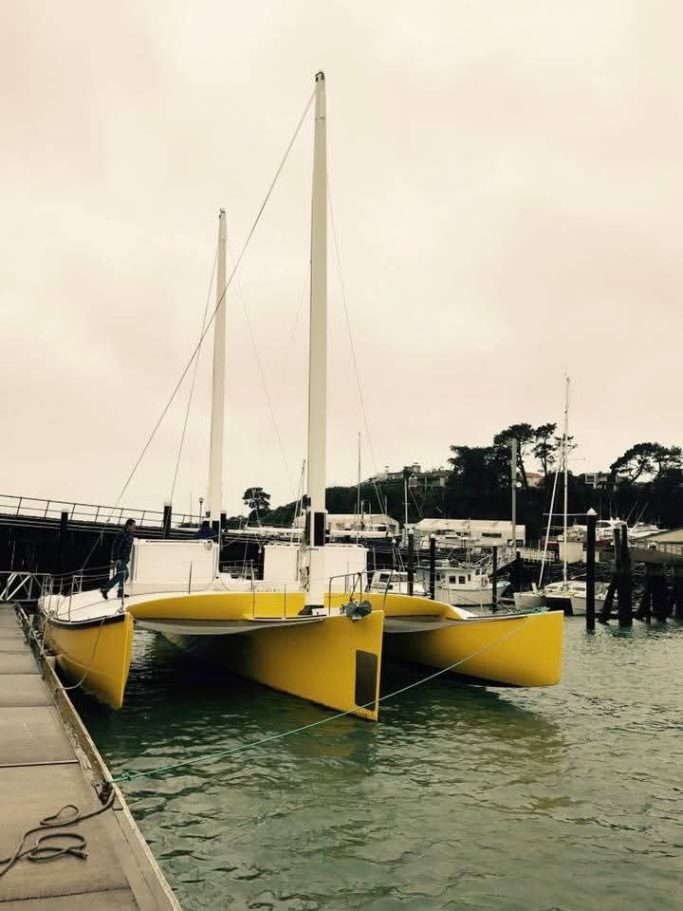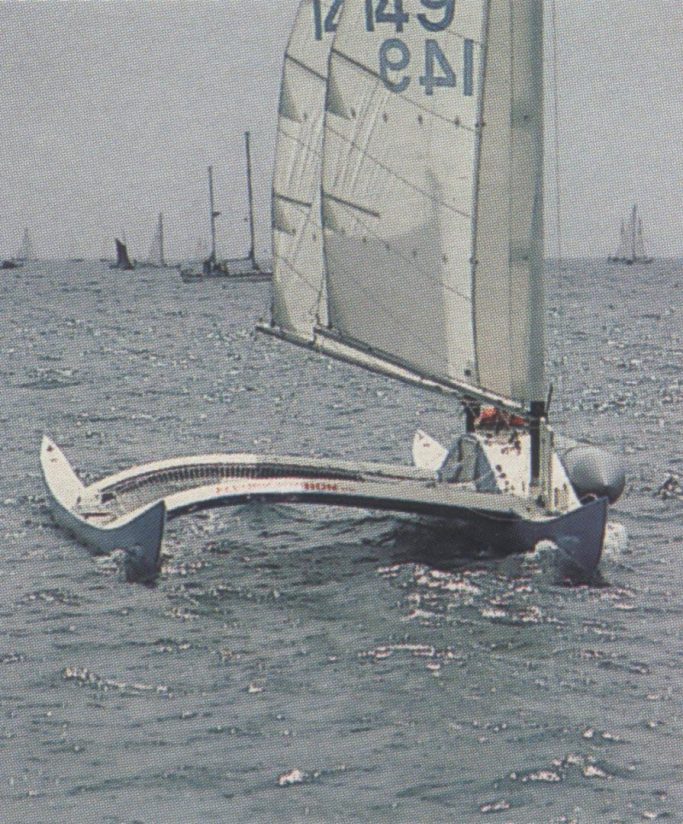Dick Newick
American Multihull Designer 1926 to 2013
Richard C Newick (known as Dick) is a revered and famous pioneer who emerged in the 1950's with Piver, Choy, Kelsall, Wharram and others and equally left an amazing legacy in his designs and in their achievements that established multihulls as here to stay. Starting as a kayak builder and designer, Dick started his multihull career with a 40 foot catamaran for his day charter tourist business based in the Virgin Islands launched in 1956. However following on from her success he continued to experiment with trimarans for speed. His first in 1960 was another day charter yacht called Trine. She was 32 feet long with relatively short hard V shaped floats (not dissimilar to the original Nimble of Arthur Piver. He designed her with advice from McLear and Harris as consultants. Dick also consulted Erick Manners in the UK and Tchetchet and Louis Macoulliard in the US. In 1962 he designed Lark a 24 foot day sailor again with small submersible floats.
In 1962 He made a giant step forward with his first ocean going trimaran the Trice which was successful and fast with a round bilge main hull and rounded curved V floats. More trimarans followed and in the wealthy enclave of the Virgin Islands he made good connections to finance his designs. He entered the World stage and shocked the establishment in 1967 when he created a proa or single outrigger craft for the 1968 OSTAR. Cheers was craft that carried the outrigger to leeward as a stabiliser. She resembled a catamaran with the rig on the windward hull. Although 40 feet long she had minimal accommodation for her skipper (Newick's long term associate Tom Follett). The stuffy English yacht club who organised the OSTAR initially refused to allow the entry deeming the craft to be extreme and dangerous. Follett finished an amazing third behind two 50 foot mono hulls. One report described overhearing an onlooker at Rhode island saying " He must be nuts to sail that thing".
Proas became a long term obsession of Newick (and many others ) although none achieved the success of Cheers. In 1972 however Follett was back and finished fourth in Three Cheers a 46 foot trimaran with a distinctive whaleback deck joining the three hulls. She was a beautiful creation painted bright yellow and finished well but Follett thought he could have won had the boat self steered but she would not because she was so fast that windvane self steering would not work and Newick's ketch rig that was intended to give balance combined with two centreboards failed to deliver balance and self steering. She was the inspiration for a whole new breed of trimaran. In 1976 she had been bought by English yachtsman Mike McMullen. He had fallen in love with her and after sailing her back to the UK on her third transatlantic voyage raced her in the Round Britain race and sailed her extensively. Sadly his wife was killed working on the yacht just before the OSTAR and after the start McMullen was never seen again. Some accounts say a cargo ship saw an upside down yellow trimaran north of the Azores believed to be Three Cheers. Others say that wreckage identified as being parts of Three Cheers (identified from serial numbers on instruments) was washed up in Scotland later suggesting that the yacht has been smashed to pieces possibly by a collision with a ship. It is likely that this is the most common reason for single handers to disappear because necessarily they cannot keep watch while asleep. Speculation has been made that Joshua Slocombe, Arthur Piver and Alain Colas were all victims of ships sending them and their craft to Davy Jones' locker. If Three Cheers capsized and was broken up subsequently by a collision or by storms we will never know. Today with advanced batteries and equipment like AIS and radar a single hander can set alarms and at least rely on equipment to maintain electronic watch. Mike McMullen had nothing like that and one has to doubt that his mental state after suffering the trauma of Lizzie's death, was best suited to the task he set himself. He had fallen overboard before and Three Cheers had no pulpit of lifelines.
Phil Weld tiring of his fragile Kelsall trimaran Trumpeter turned to Dick Newick for his next boat and Dick drew the 60 foot Gulf Streamer in 1974. Built in foam sandwich she was launched and sailed to Plymouth UK for the Round Britain Race finishing second to Knox Johnston's 70 foot British Oxygen catamaran. Returning to the USA she set out again in 1976 intending to race back in the OSTAR. Disaster struck appropriately in the Gulfstream when in the aftermath of a storm Weld was in his bunk with a crewman on the helm when a massive wave overwhelmed the yacht from behind and she broached and was rolled over by the breaking wave.
It seems to have been a combination of a pitchpole as the yacht was lifted onto her nose by the wave and a roll over as she broached and went across diagonally rolling her lee float under. Newick at that time designed low buoyancy floats on his designs that displaced no more that the weight of the yacht so with the added force of the wind in the rig and the overturning moment of a breaking wave the vessel will roll the lee float under and it can trip her up rather than add sufficient righting moment that the yacht stays upright. It may be that the size and force of the wave would have destroyed any yacht but Weld and his crew survived and lived inside the trimaran until rescued. After the rescue Weld flew back trying to find his yacht but failed to locate her. In fact she was picked up by a Russian ship and taken to Odessa and rebuilt to sail on. In 2025 she lies submerged and abandoned in Martinique. Weld concluded that the monster 40 foot double crested wave was the equivilent of a lightning strike.
A lot of research has been carried out since 1976 on stability in waves and trimaran design changed with much longer and higher buoyancy outriggers now normal. But avoiding the Gulfstream and storms at that time of year is also prudent.
Newick drew Weld an improved version of the same design called Rogue Wave which used similar hull lines but improved cabin and cross arms structures. This time she was built in cold molded wood epoxy construction by the Gougeon Brothers. This trimaran came to the UK too for the 1978 Round Britain race finishing third to two 50 foot Kelsall trimarans but was deemed too large for the 1980 OSTAR which restricted entry size following the entry of a 128 foot schooner and then Alain Colas' 300 foot monster yacht.
A furious Weld turned to Dick Newick again for an extreme lightweight 50 foot racer called Moxie in which he achieved victory in 1980 pipping Nick Keig in his 53 foot Kelsall Three Legs of Mann III (a luxury cruising yacht) to the post by 7 hours. Mike Birch raced in a 46 foot Three Cheers design called Olympus Photo coming fourth to Moxie after damaging the underside of the bridge deck which he stopped racing to repair and stop the ingress of water. It added to his delay that he was trying to decide whether the repaired boat was safe to race on before deciding to continue.
Interestingly Nick Keig had suffered damage to his mainsail that slowed him down and Eugene Riguel was well down the field in VSD another 53 foot Kelsall with a broken dagger board and damaged sails.
The first five boats home were all trimarans and all arrived within 20 hours. Just as Weld had found on Trumpeter in 1972 when that very fast trimaran also limped in with damage well down the field too having a fast boat was essential but a lack of gear failure and good luck were too. In Moxie the 65 year old Weld had delivered a perfect race in a trimaran that was possibly Newick's greatest design.
Dick Newick's fame was also boosted in the 70's when he had designed a boat sometimes called a transatlantic daysailer, the semi production Val 31. In 1976 three of these entered the OSTAR and Mike Birch came second to a 73 foot mono hull sailed by French star Eric Tabarly. In 1978 Birch won the French Route de Rhum race in Olympus Photo a 33 foot Newick/Greene trimaran before building the Three Cheers design Olympus for 1980.
Dick Newick designed many multihulls and his designs still sail today. Most were very light with spartan accommodation and no concession to luxury. He famously said he would not allow the client's wife to design the boat! He also said he could design speed comfort and low cost but never all those characteristics in the same boat. The evolution of designs was fascinating with the shapes evolving as he moved toward long higher buoyancy outriggers. He designed some very popular classes of boat -the Val went through many gestations -a Val 2 and Val 3. In the 36 to 40 foot bracket his Native, Panache, Creative and Echo all developed the same size trimaran concept on similar but evolved lines. His Ocean Surfer design for example was a very different design altogether to his earlier boats. Likewise Pat's the yacht he designed for his wife and he to cruise but they never did because by the time he had finished the build his wife Pat was no longer willing to suffer the deprivation of home comforts required to cruise a Newick.
Moving from the Virgin Islands to Maine he was a full time multihull designer and builder and sailor. He changed his mind on many things and after the capsize of Gulfstreamer he experimented with sea anchors and drogues and techniques to best handle his multihulls in adverse weather. Later when a Val 2 capsized in the Gulfstream in Winter he concluded that it simply should not have been there which was a sensible assessment that while he could design fast exciting boats a lightweight trimaran can never be a boat that is impregnable to the worst the Ocean has to throw at it.
What he did create were yachts that were works of art, light, simple and fast. All of them were unmistakably a Newick.
The Singlehanders
This French Canadian sponsored film of the 1980 OSTAR follows among others Mike Birch on his Newick Three Cheers class trimaran Olympus.
Sailing a Newick trimaran
Sailing a Newick Trimaran in the bay of Islands New Zealand.



